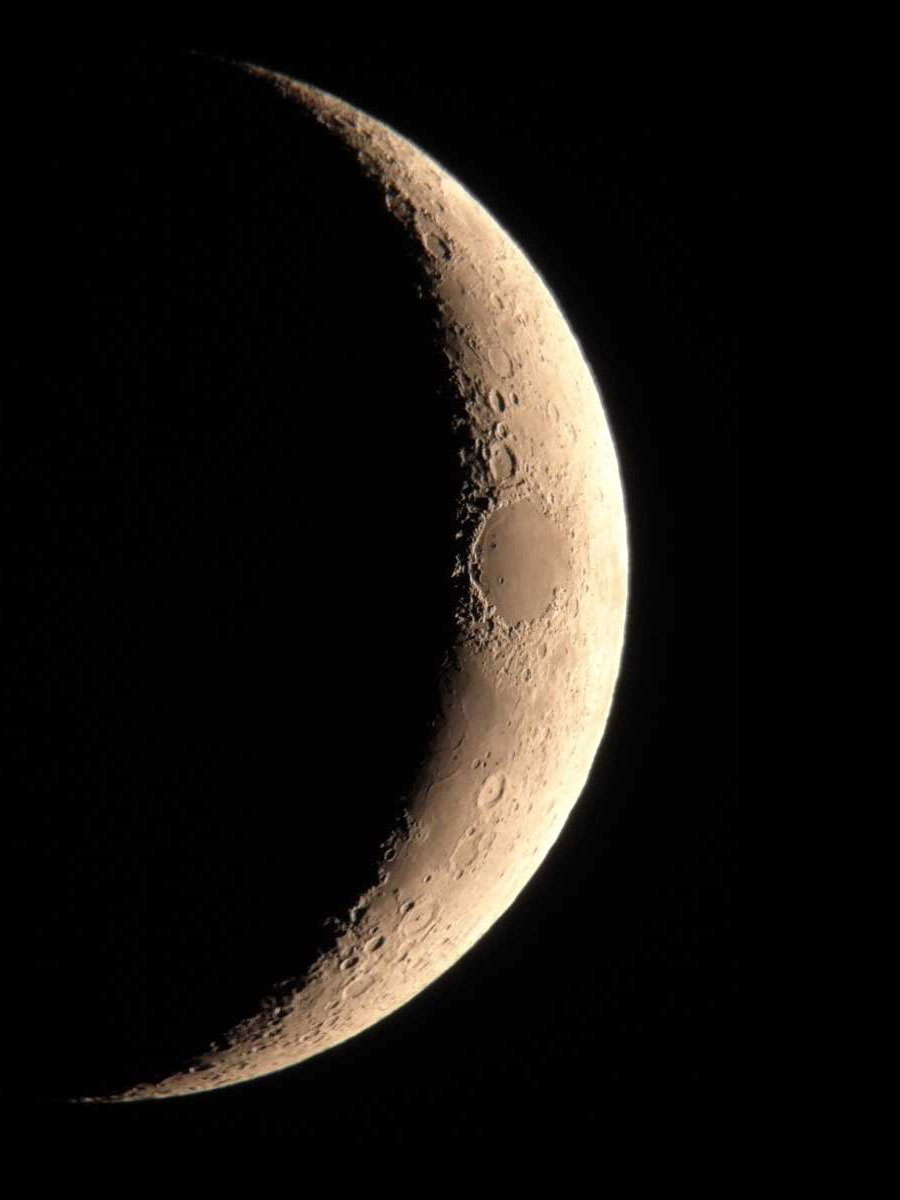
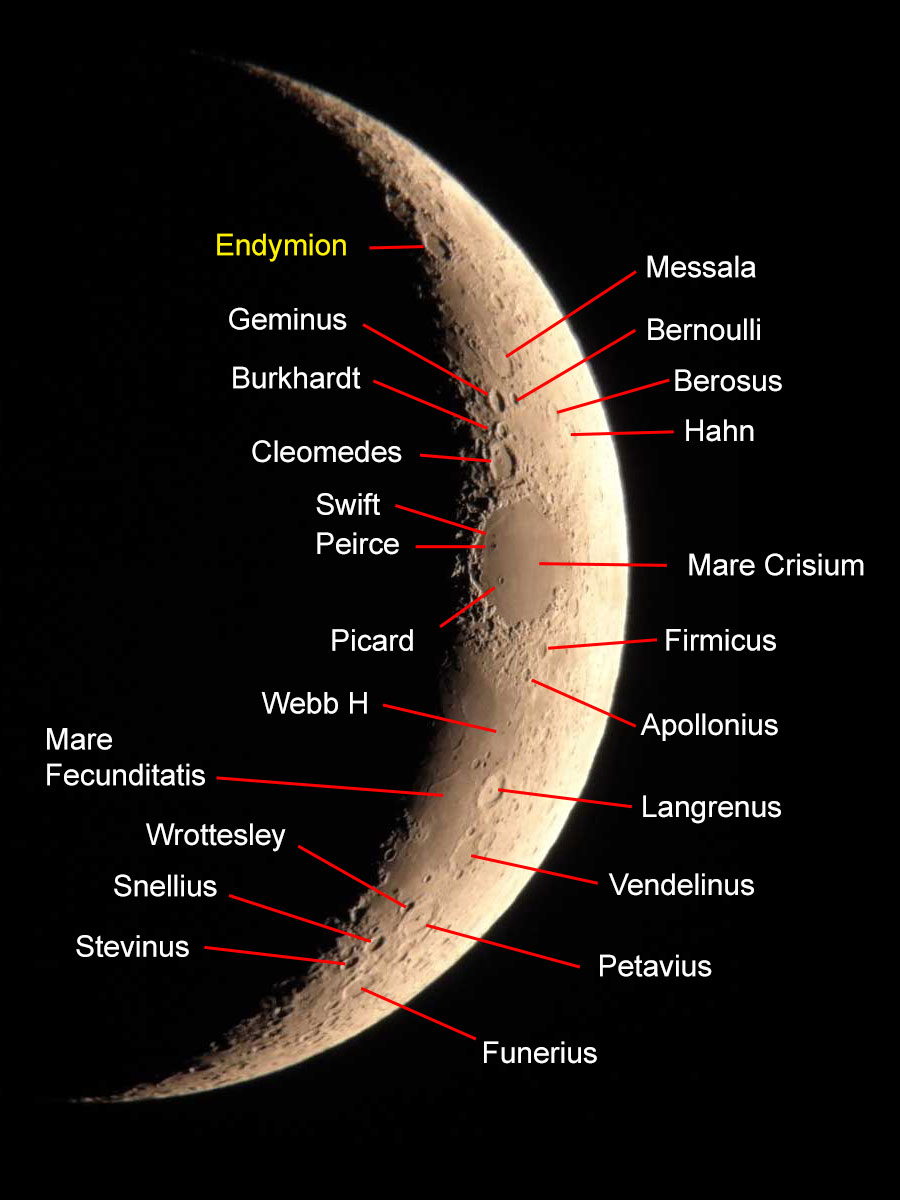
Introduction | D | E | F | G | H | I | J | References
On these pages I do "moon walks" on the basis of my own photos. In other words, I try to name the objects on my lunar photos to get to know the moon better. Maybe these pages will help others to get to know the moon better as well...
On this and further pages, I present selected surface elements (maria, craters, mountains) on the moon, or combinations of these in alphabetical order, thus, as a small "moon encyclopedia." Some of the photos are repeated because they contain several interesting objects; the current objects are labelled in yellow. The photos are rotated by 180 degrees or mirrored so that they correspond to the normal visual impression, but they are often somewhat skewed. I hope to be able to replace some photos with better ones in the course of time...
Notes
Sources
For more information see the references.
On this page and on a second one, I present landscapes on the moon, surface elements (maria, craters, mountains), or combinations of these in alphabetical order, thus, as a small "moon encyclopedia." The photos are rotated by 180 degrees or mirrored so that they correspond to the normal visual impression, but they are often somewhat skewed.
Note: The description of the general elements of the moon surface can be found on page Walking the Moon with my own Photos - Overview.
...
The crater Endymion is located at the northeastern edge of the moon, has a diameter of 122 km and a depth of 4100 m (Spix) or 125/126 km and 4600 km (VMA).
 |
 |
Photo data: April 10, 2016, GSO GSD 680 telescope, Leica X Vario mounted fix to 32 mm DigiScope eyepiece
The crater Erathosthenes is located at the bottom end of Montes Apenninus, has a diameter of 58 km and a depth of 3500 m (Spix) or 60 km and 3570 km (VMA).
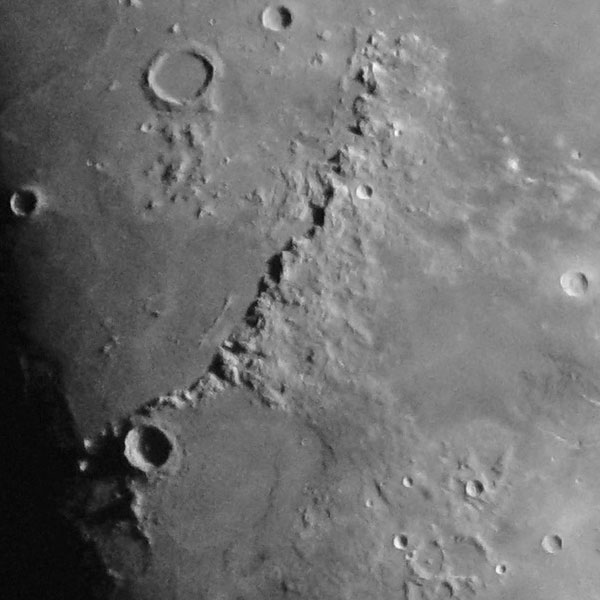 |
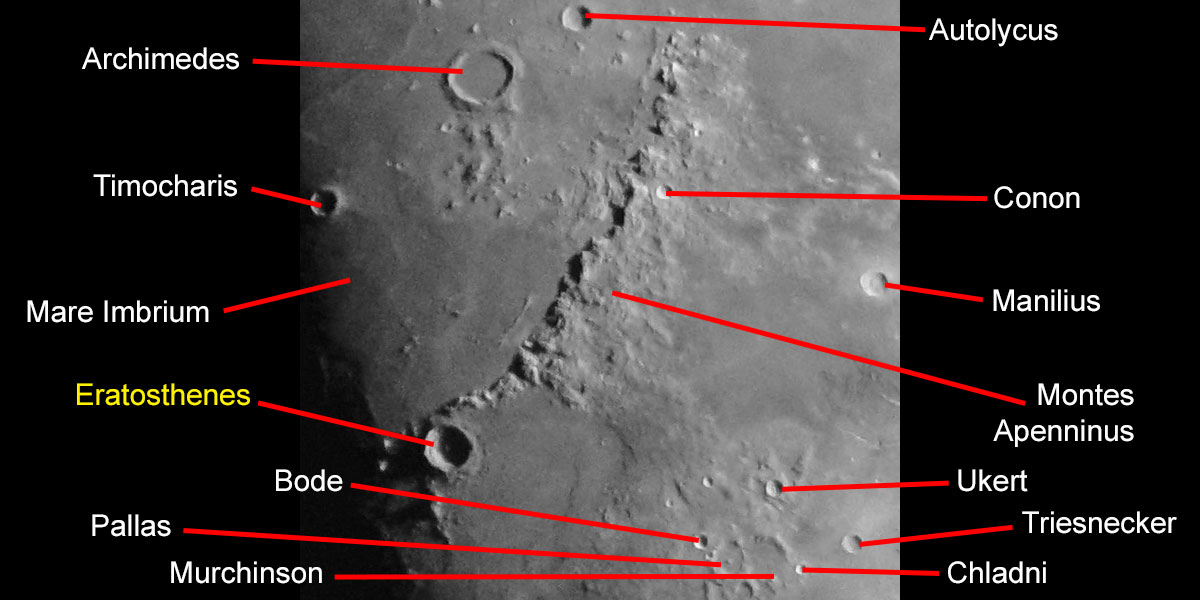 |
Photo data: March 25, 2018, Sky-Watcher Skymax-127 OTA, Sony RX100 M4 attached to the eyepiece
The following photos shows Eratosthenes and three mountain ranges at the eastern edge of Mare Imbrium, Montes Alpes, Montes Caucasus, and Montes Apenninus:
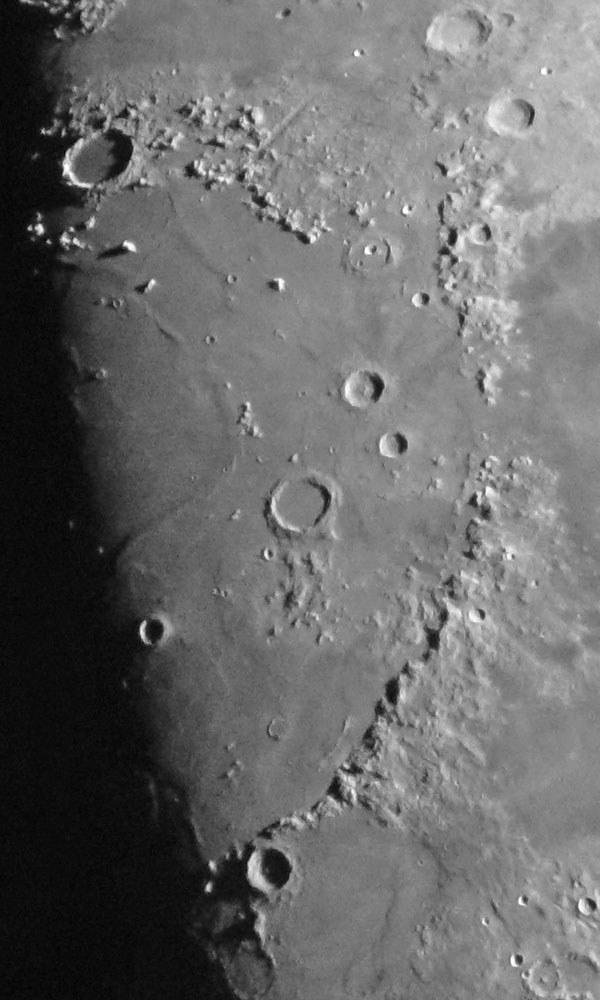 |
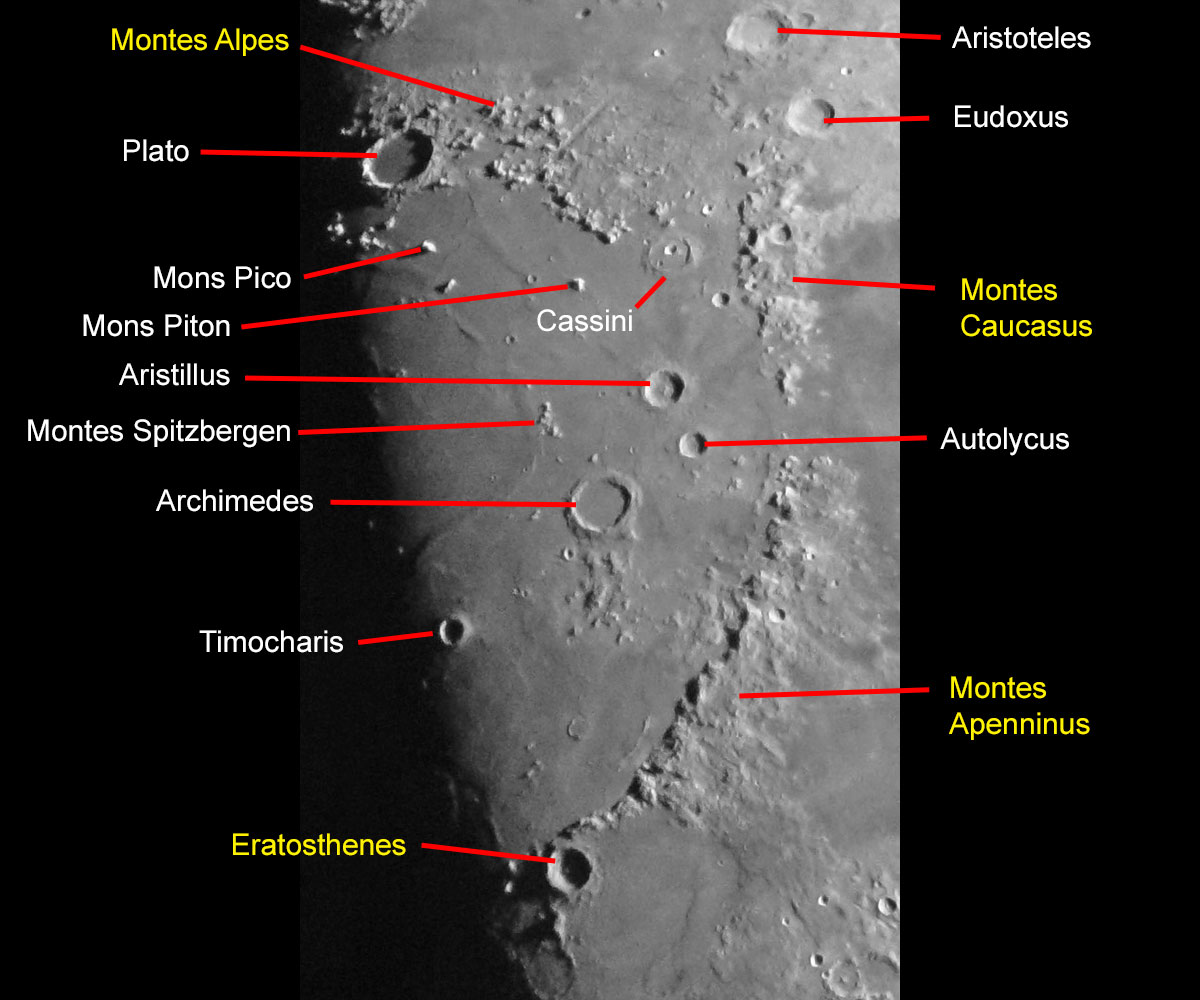 |
Photo data: March 25, 2018, Sky-Watcher Skymax-127 OTA, Sony RX100 M4 attached to the eyepiece
The crater Erathosthenes is located at the bottom end of Montes Apenninus, has a diameter of 67 km and a depth of 4300 m (Spix) or 67/68 km and 3350 km (VMA).
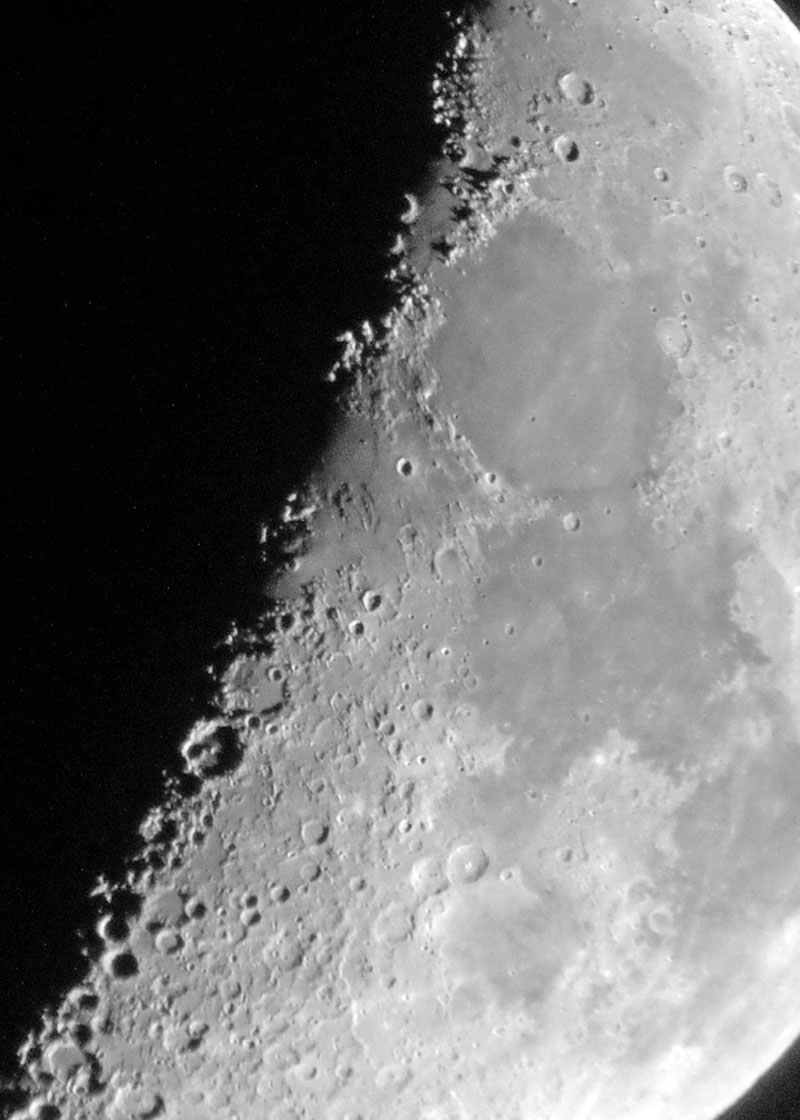 |
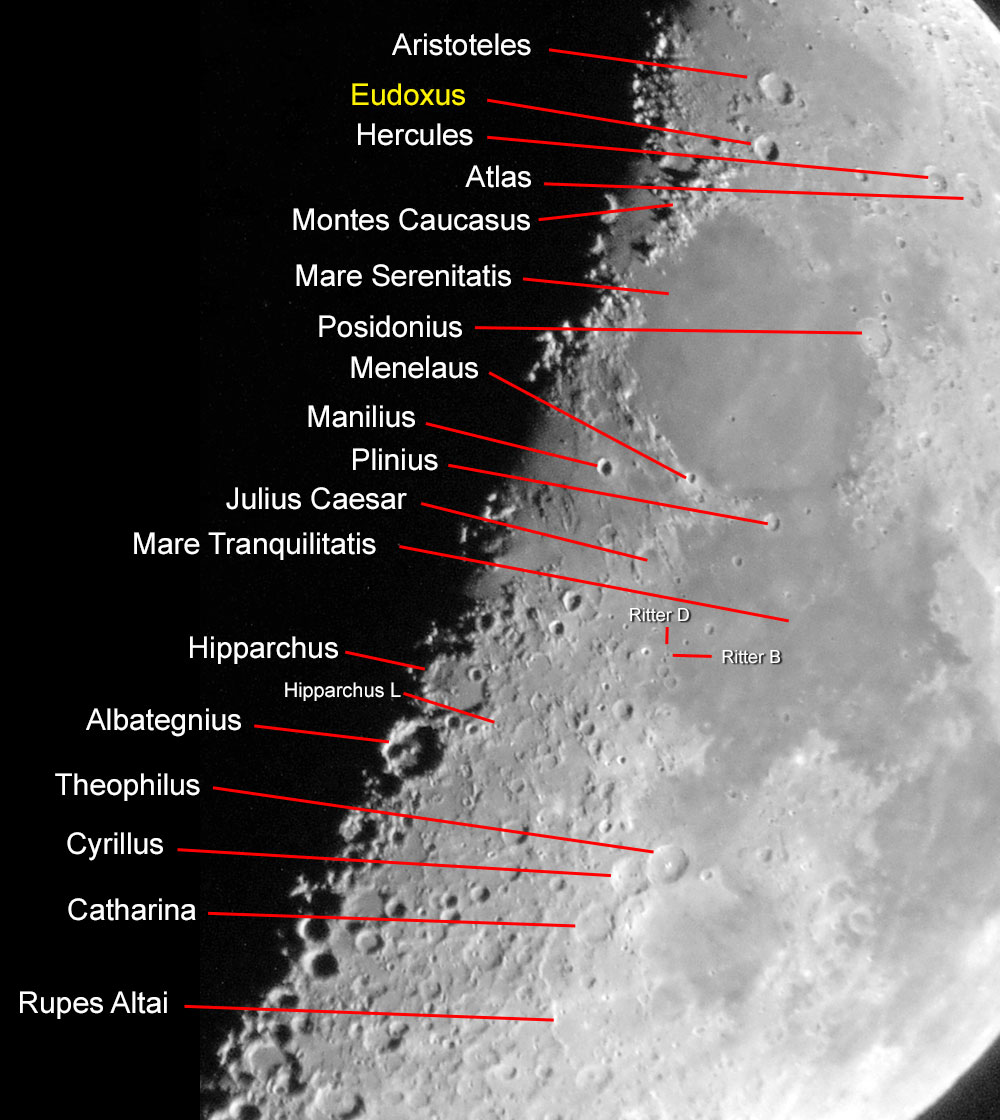 |
Photo data: February 22, 2018, Sky-Watcher Skymax-127 telescope, Ricoh GR held to the 32 mm Plössl eyepiece
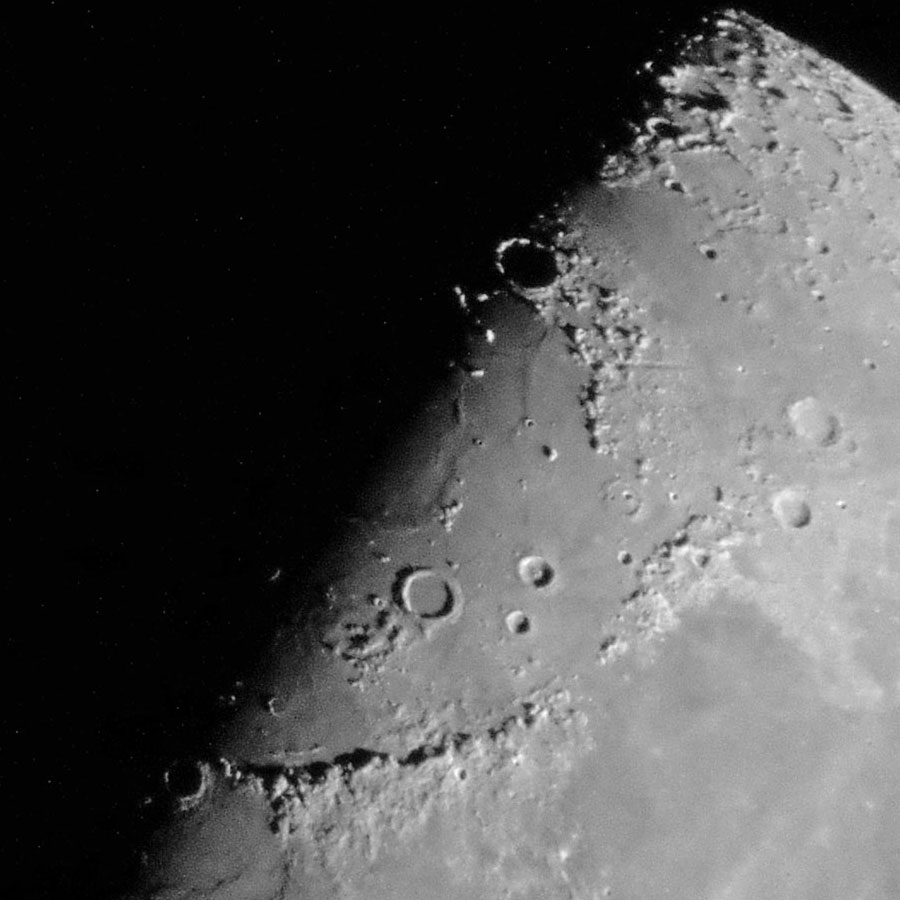 |
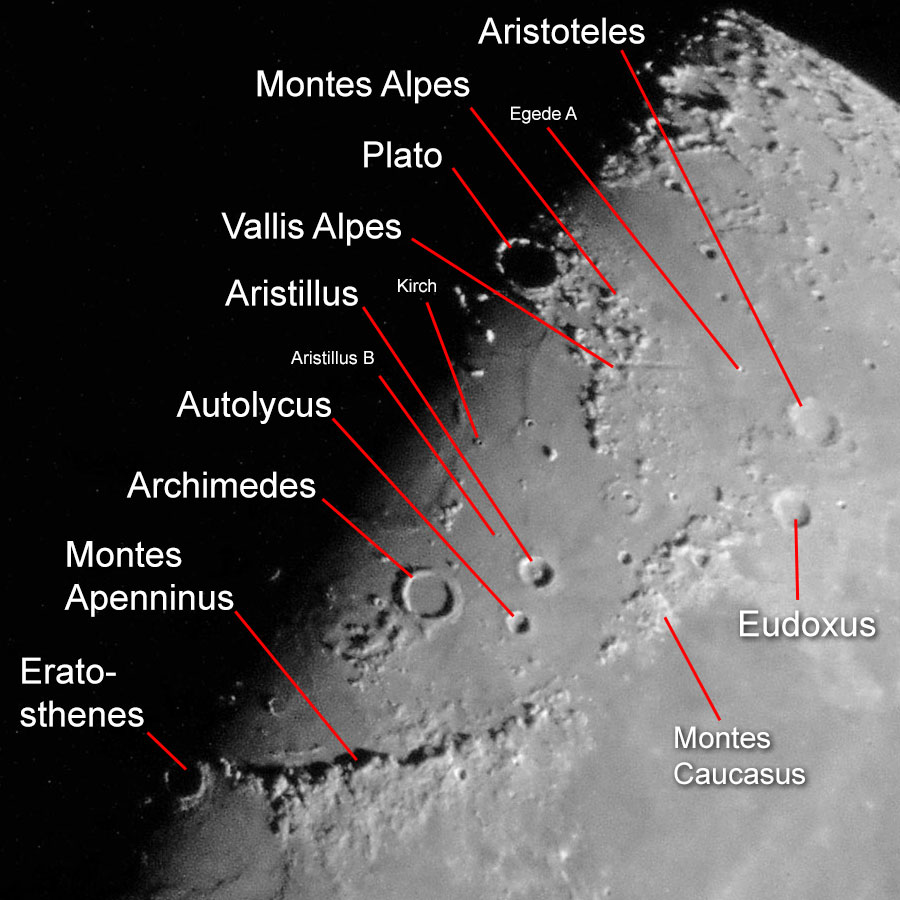 |
Photo data: February 23, 2018, Sky-Watcher Skymax-102 telescope, Ricoh GR held to the eyepiece
The following photos shows Eudoxus and three mountain ranges at the eastern edge of Mare Imbrium, Montes Alpes, Montes Caucasus, and Montes Apenninus:
 |
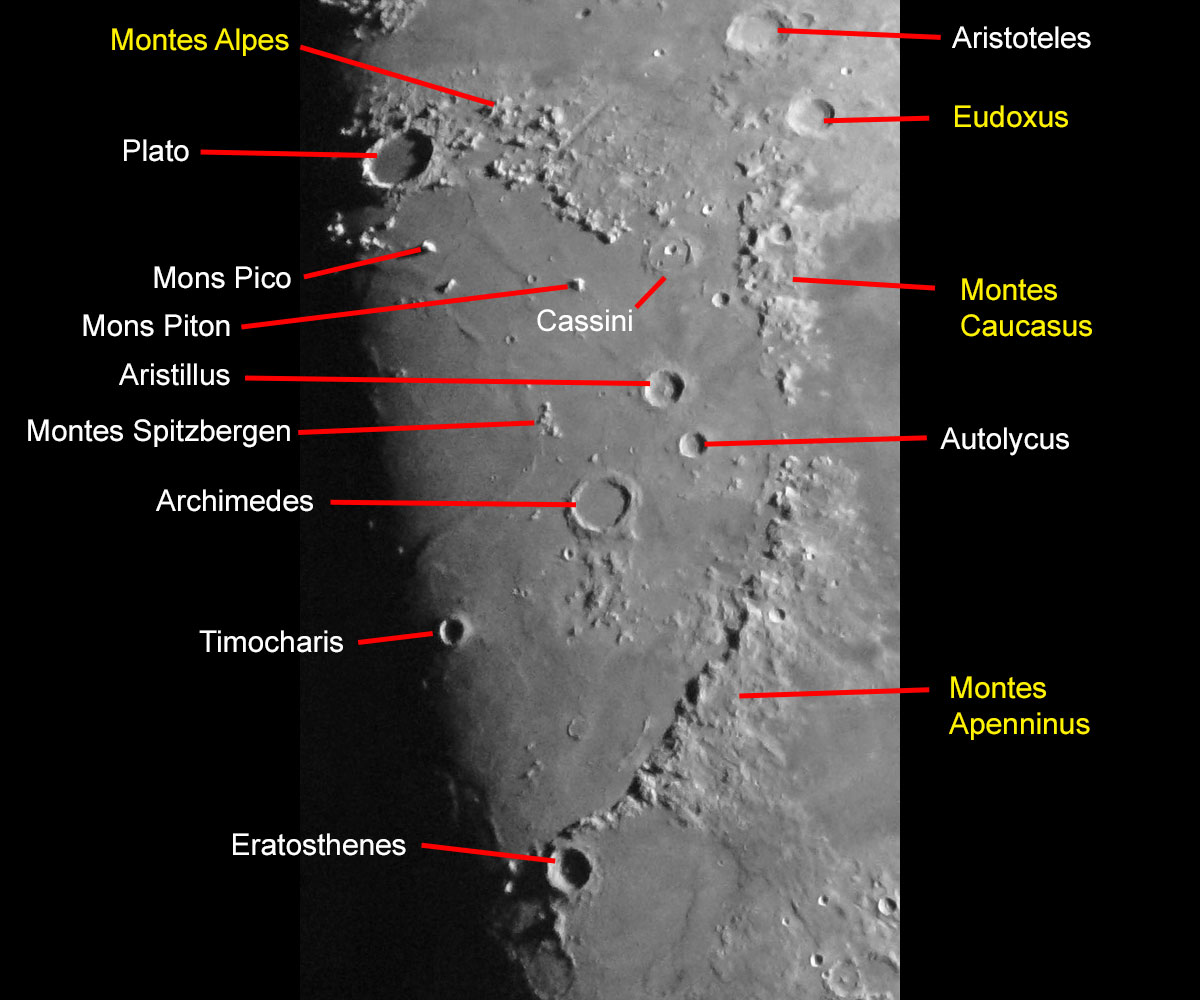 |
Photo data: March 25, 2018, Sky-Watcher Skymax-127 OTA, Sony RX100 M4 attached to the eyepiece
Mare Fecunditatis (Sea of Fertility) has a diameter of 840 km (Spix).
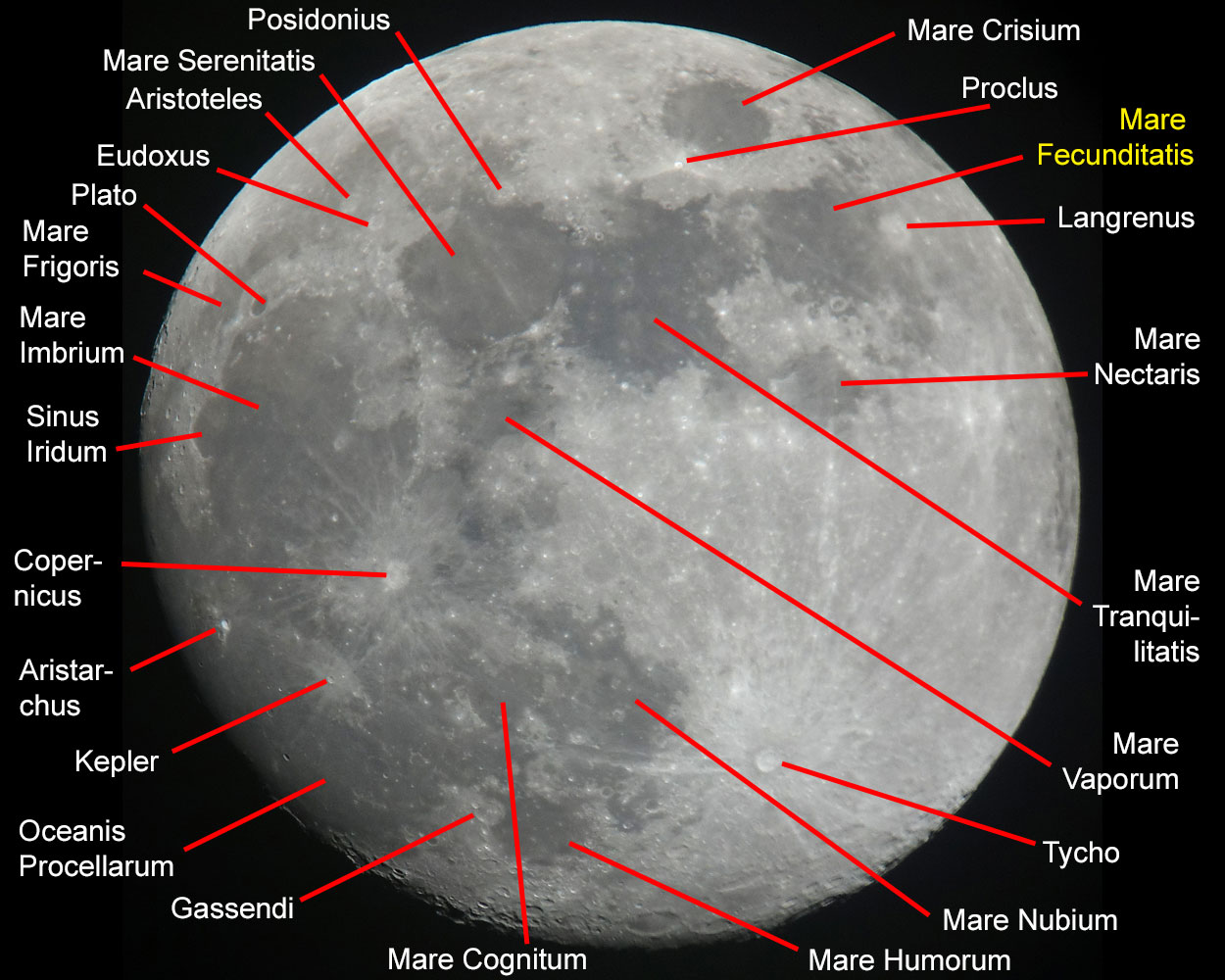 |
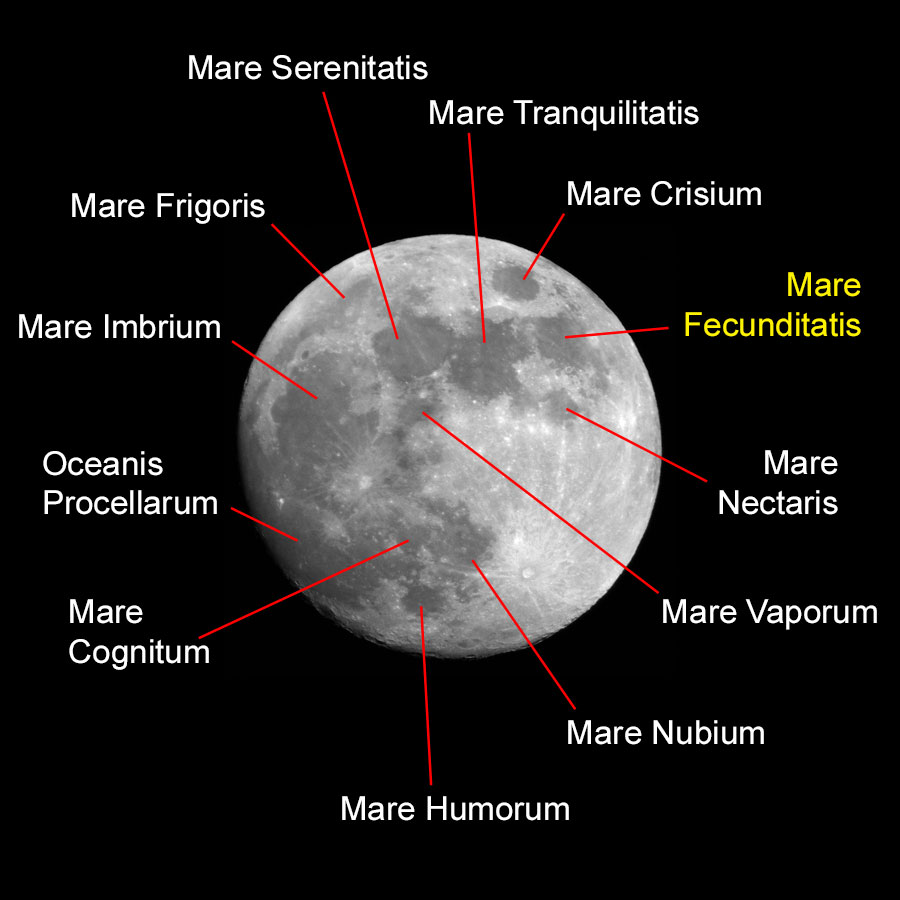 |
Photo data (left photo): March 29, 2018 (two days before Full Moon), Sky-Watcher
Skymax-127 OTA, Sony RX100 M4 attached to the 32 mm eyepiece
Photo data (right photo): February 28, 2010 (nearly Full Moon), Sky-Watcher
Skymax-127 OTA (probably), Leica X Vario (36 - 50 mm equiv.) held to a 32 mm
eyepiece (47 x)
The walled plain Fracastorius at the southern edge of Mare Nectaris (Sea of Nectars) measures 124 km in diameter (VMA). The crater Fracastorius D (28 km in diameter according to VMA) lies on the western wall of the crater.
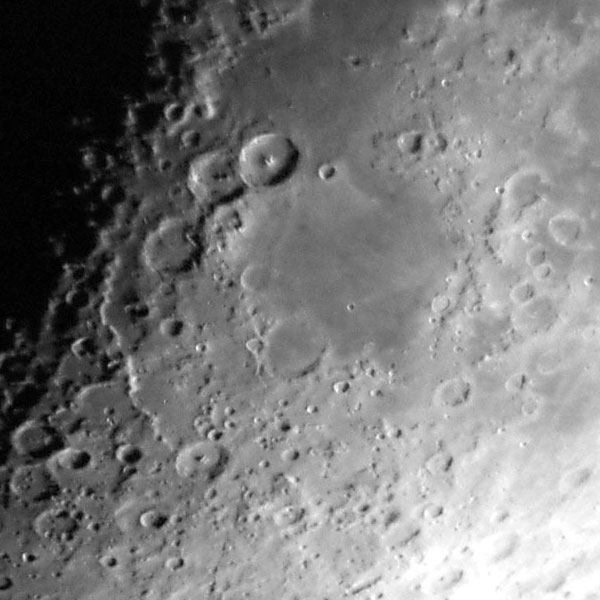 |
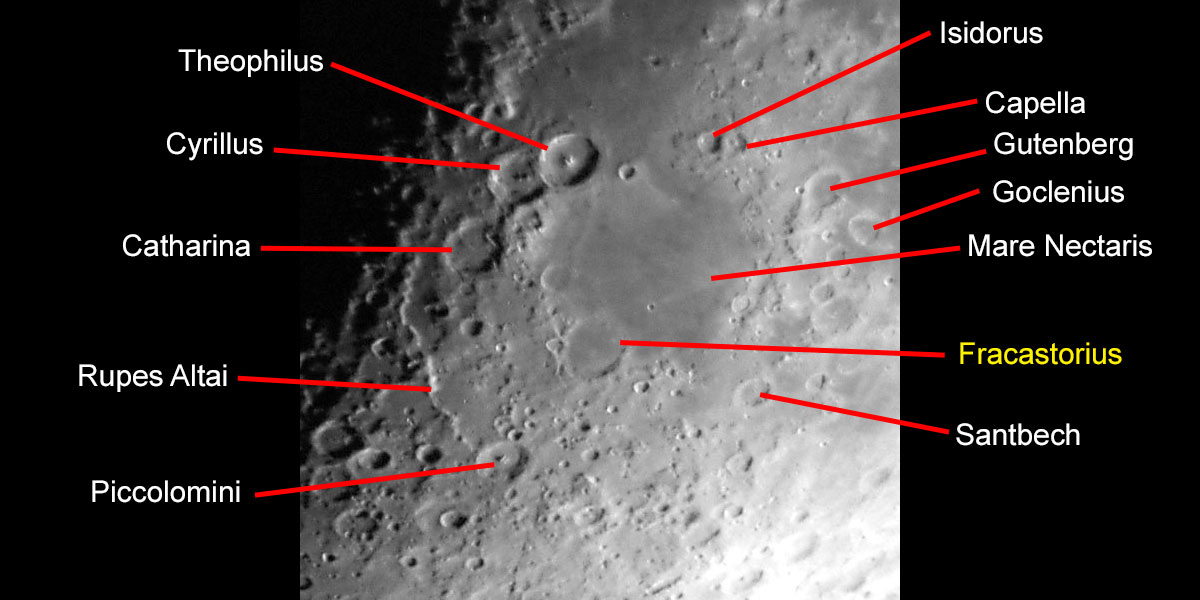 |
|
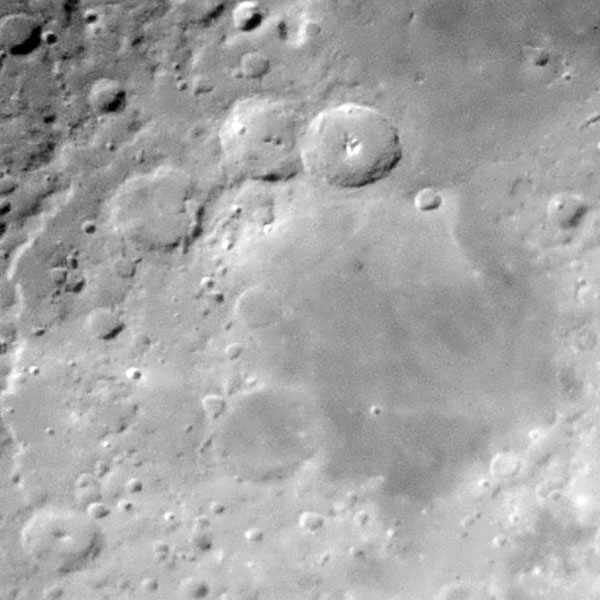 |
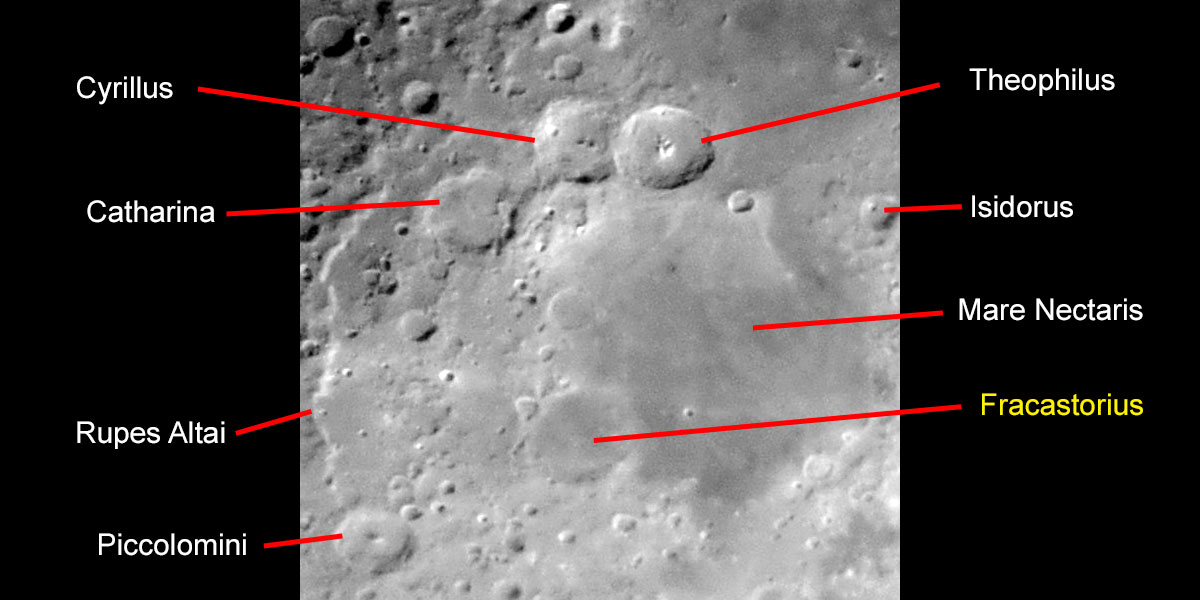 |
Photo data: April 2-3, 2017, Sky-Watcher Explorer 150PDS, Ricoh GR held to the 7 mm UWA eyepiece
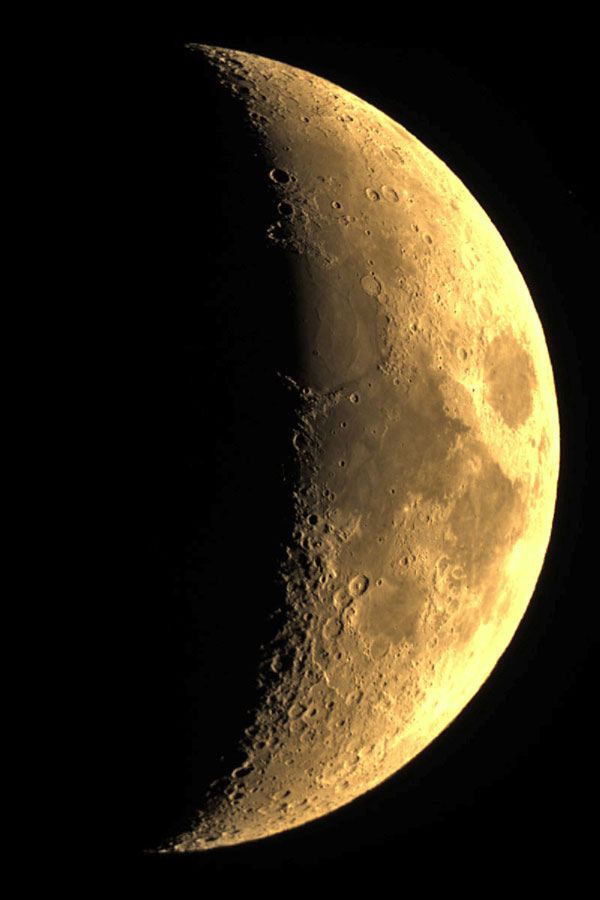 |
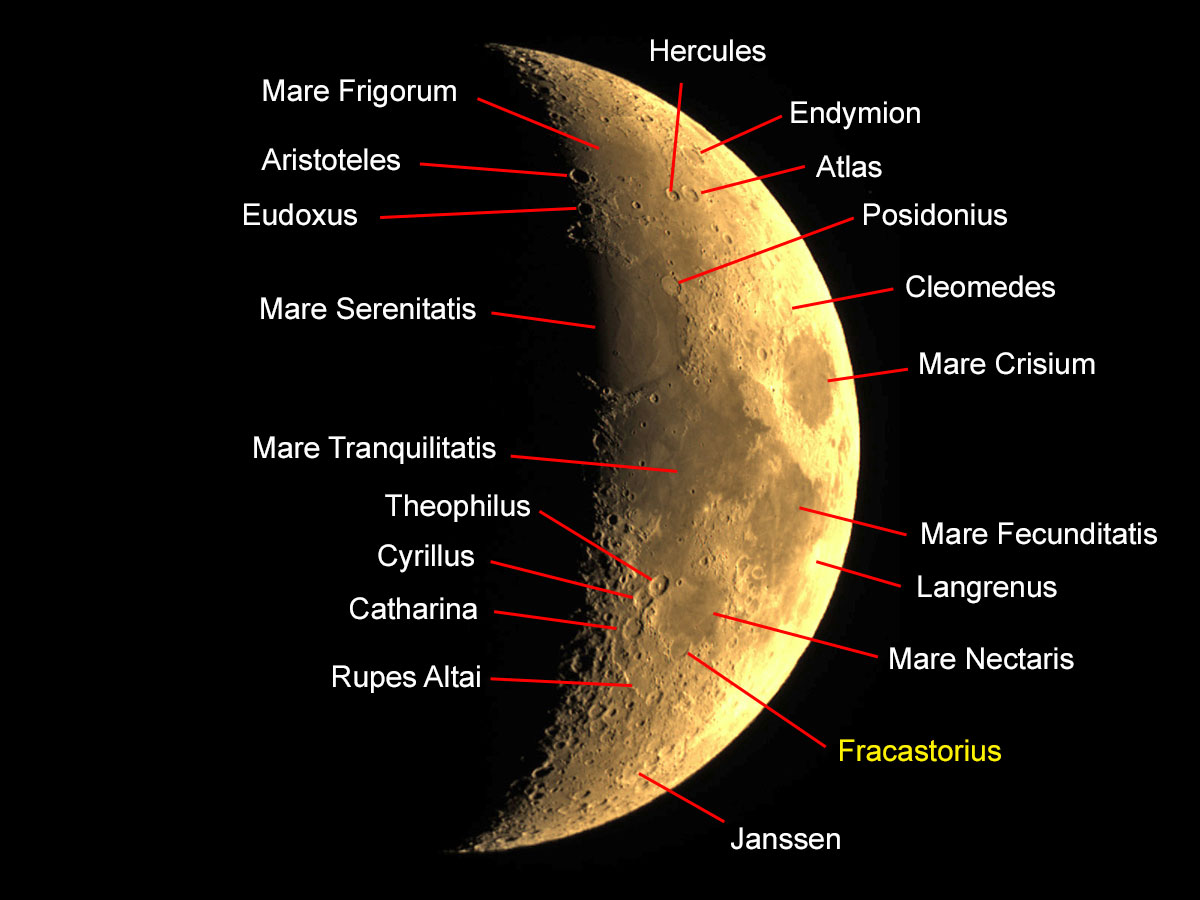 |
Photo data: February 21, 2018, Sky-Watcher Explorer 150PDS telescope, Atik Inifinity camera
Mare Frigoris (Sea of Coldness) in the northwest of the moon has a length of 1500 km (Spix) and differs from the other seas on the moon by its elongated shape.
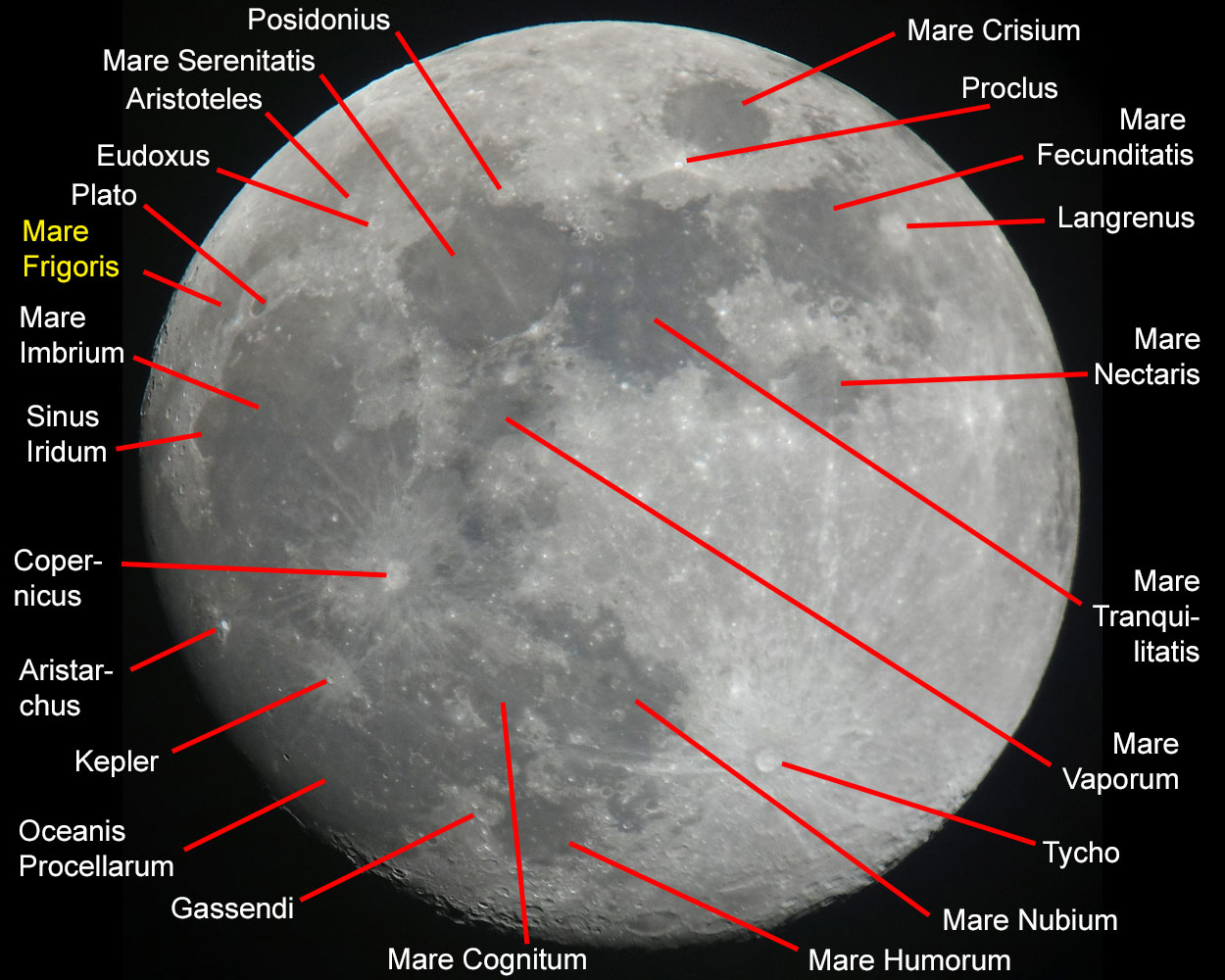 |
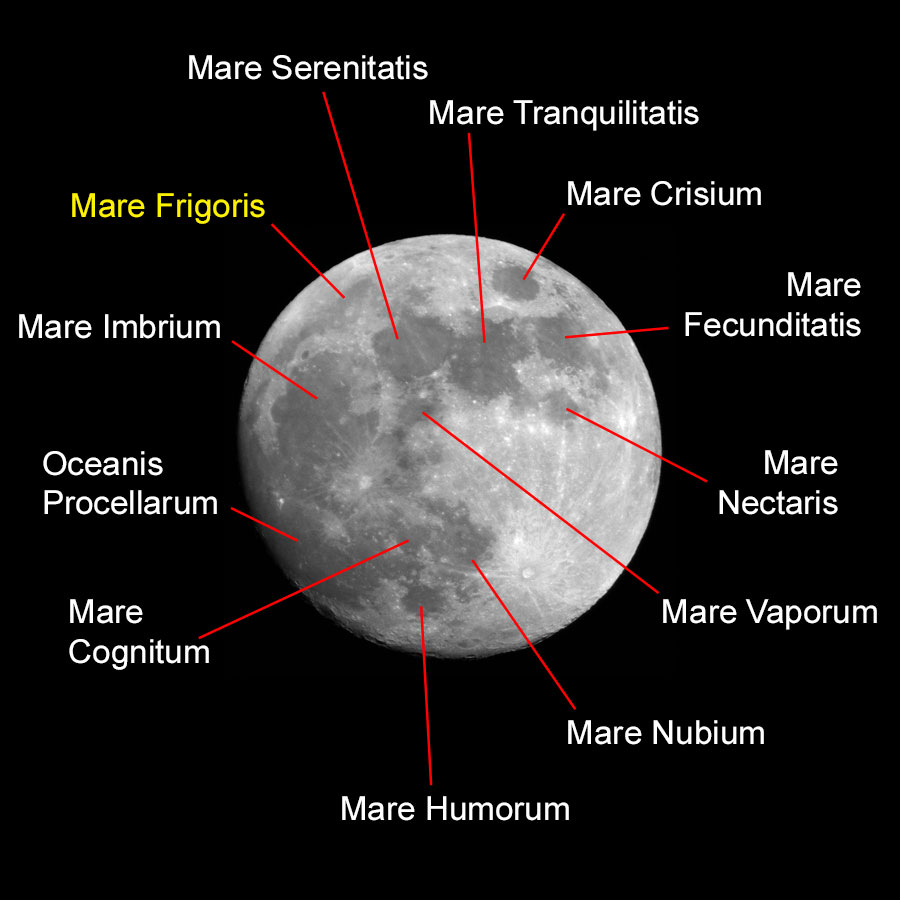 |
Photo data (left photo): March 29, 2018 (two days before Full Moon), Sky-Watcher
Skymax-127 OTA, Sony RX100 M4 attached to the 32 mm eyepiece
Photo data (right photo): February 28, 2010 (nearly Full Moon), Sky-Watcher
Skymax-127 OTA (probably), Leica X Vario (36 - 50 mm equiv.) held to a 32 mm
eyepiece (47 x)
Die Wallebene Furnerius ist 135 km im Durchmesser und 3900 m tief (S&G).
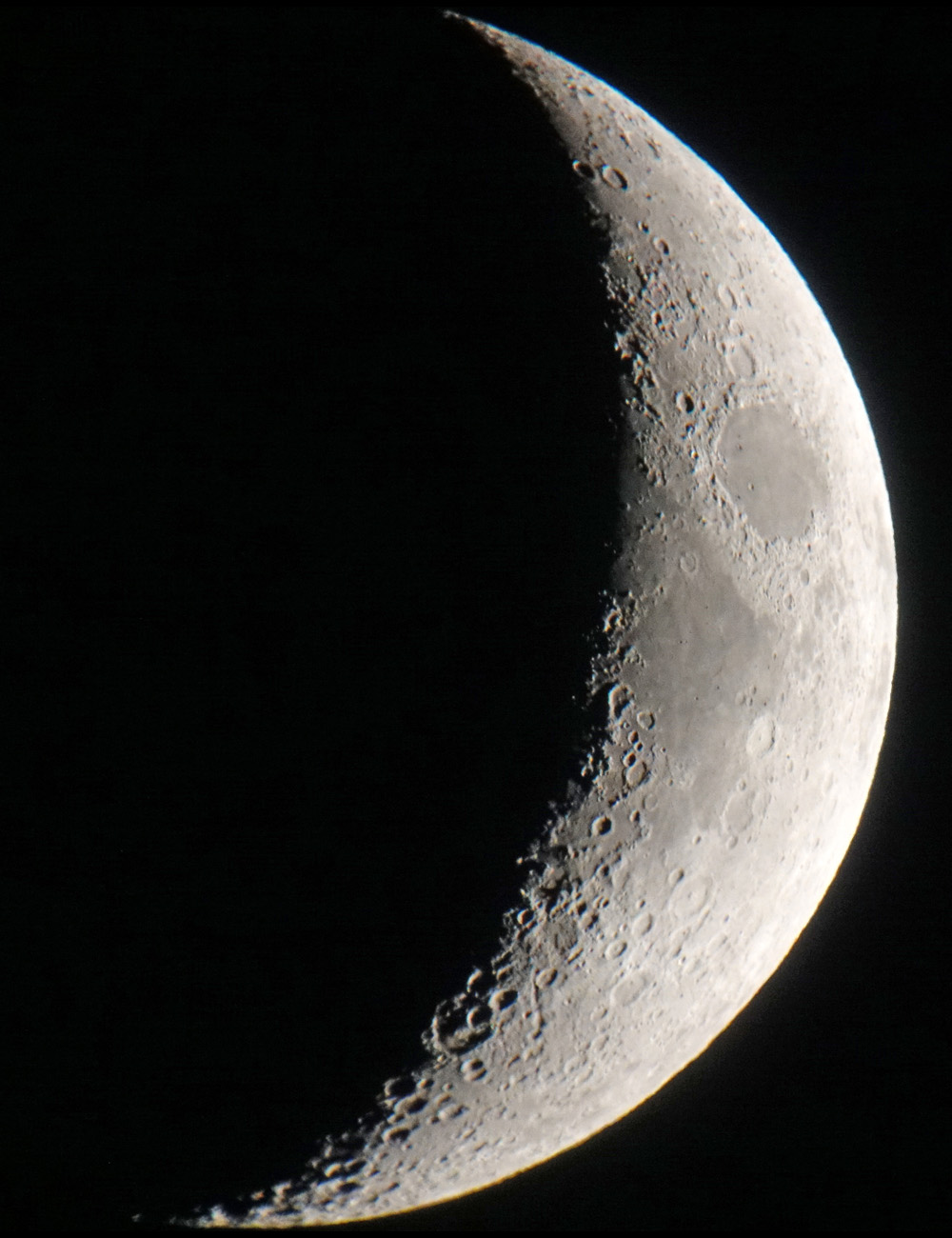 |
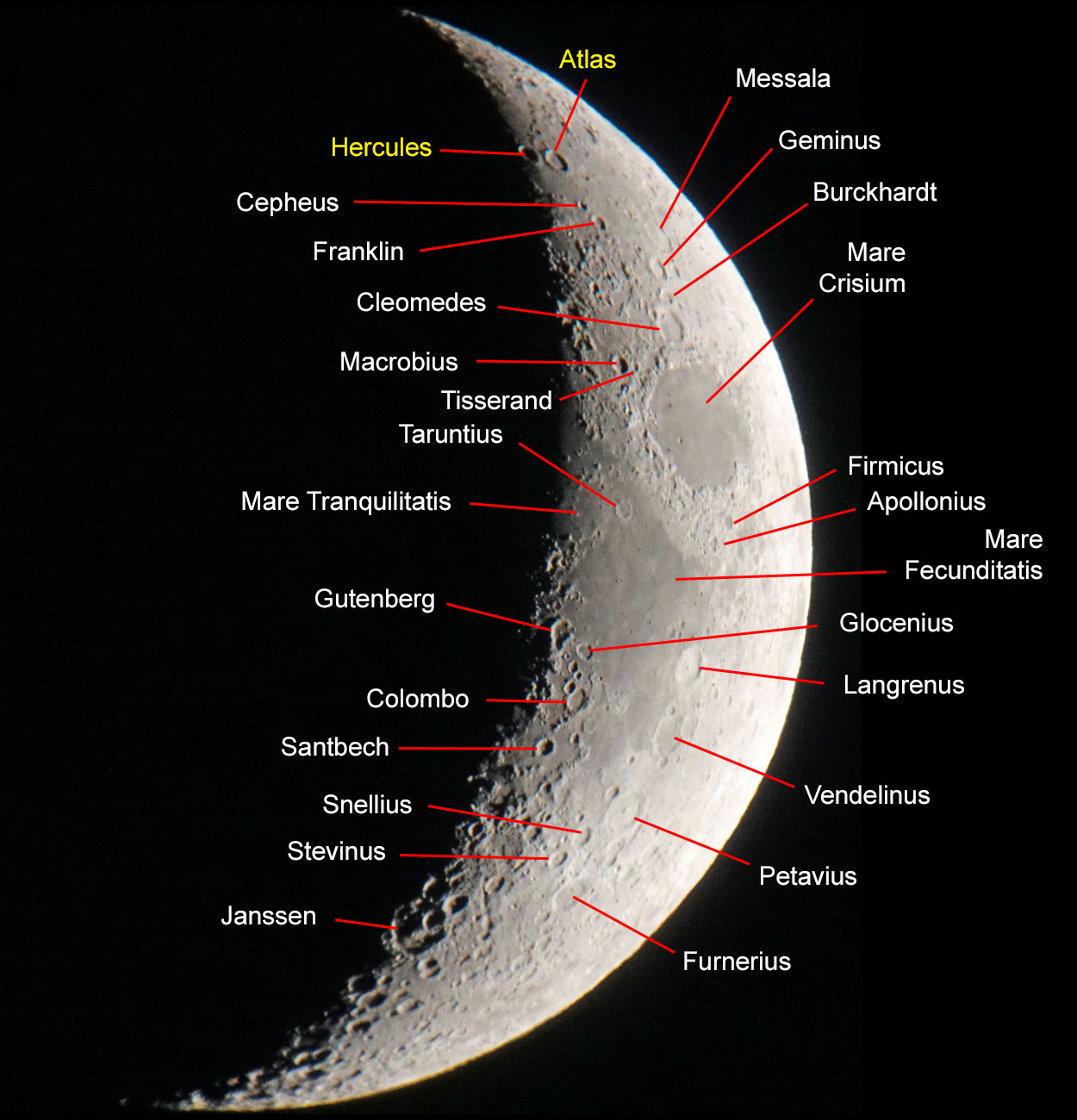 |
Photo data: August 15, 2018, Sky-Watcher Skymax-127 telescope, Sony RX 100 M4 attached to the 32 mm eyepiece
The walled plain Gassendi is located on the northwestern edge of the Mare Humorum (Sea of Steams), has a diameter of 110 km, and is 1400 m deep (Spix) (111/110 km according to VMA). On its north wall there is crater Gassendi A, which has a diameter of 33 km.
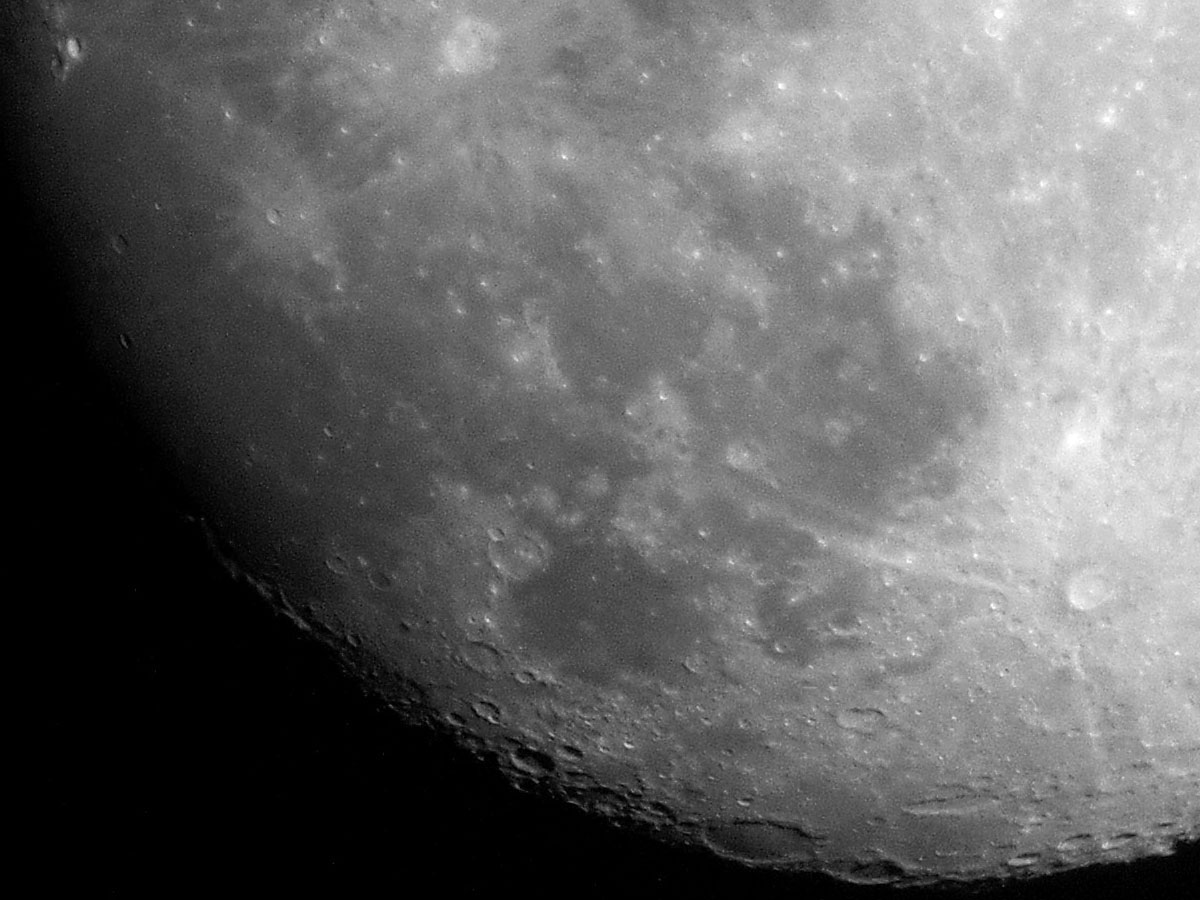 |
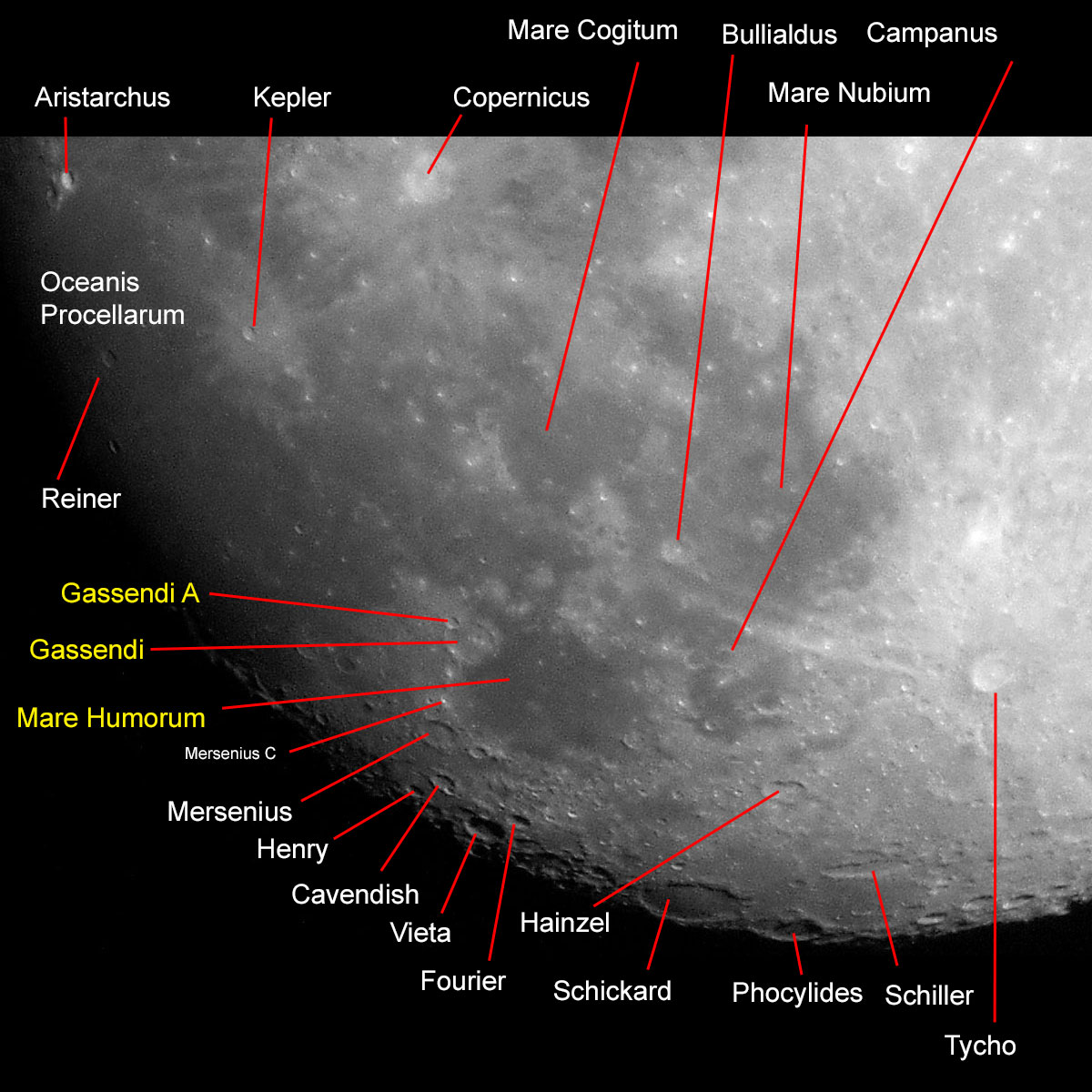 |
Photo data: February 27, 2018, Sky-Watcher Skymax-102 telescope, Ricoh GR held to the eyepiece
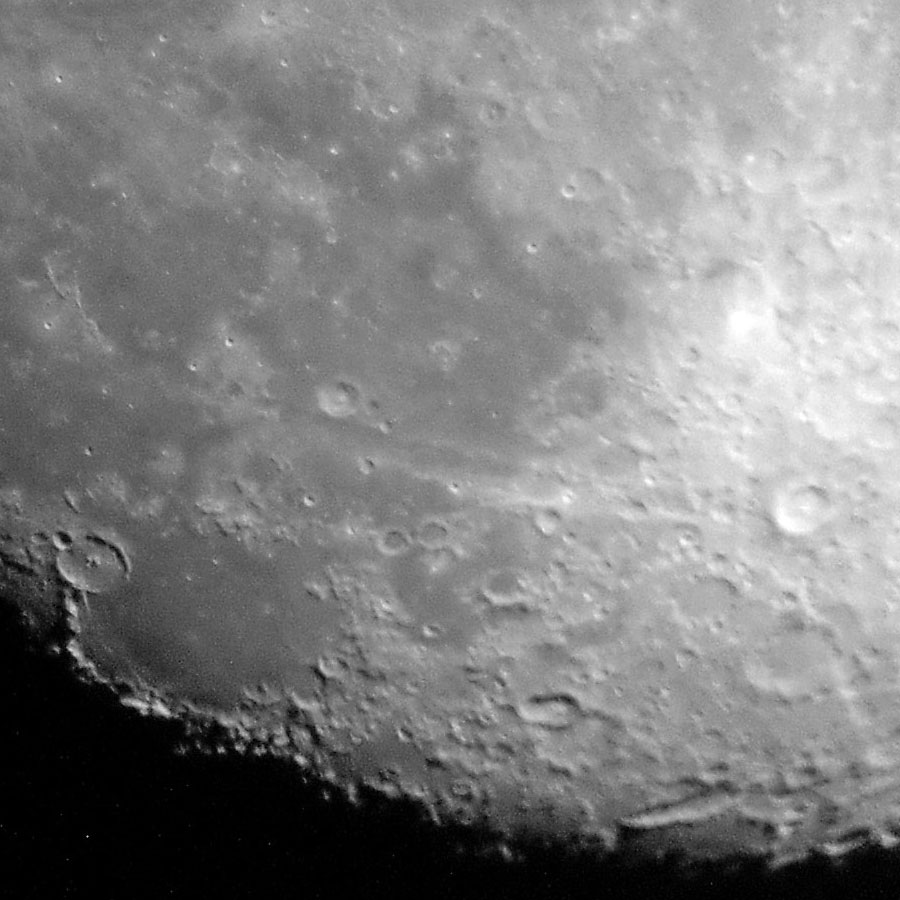 |
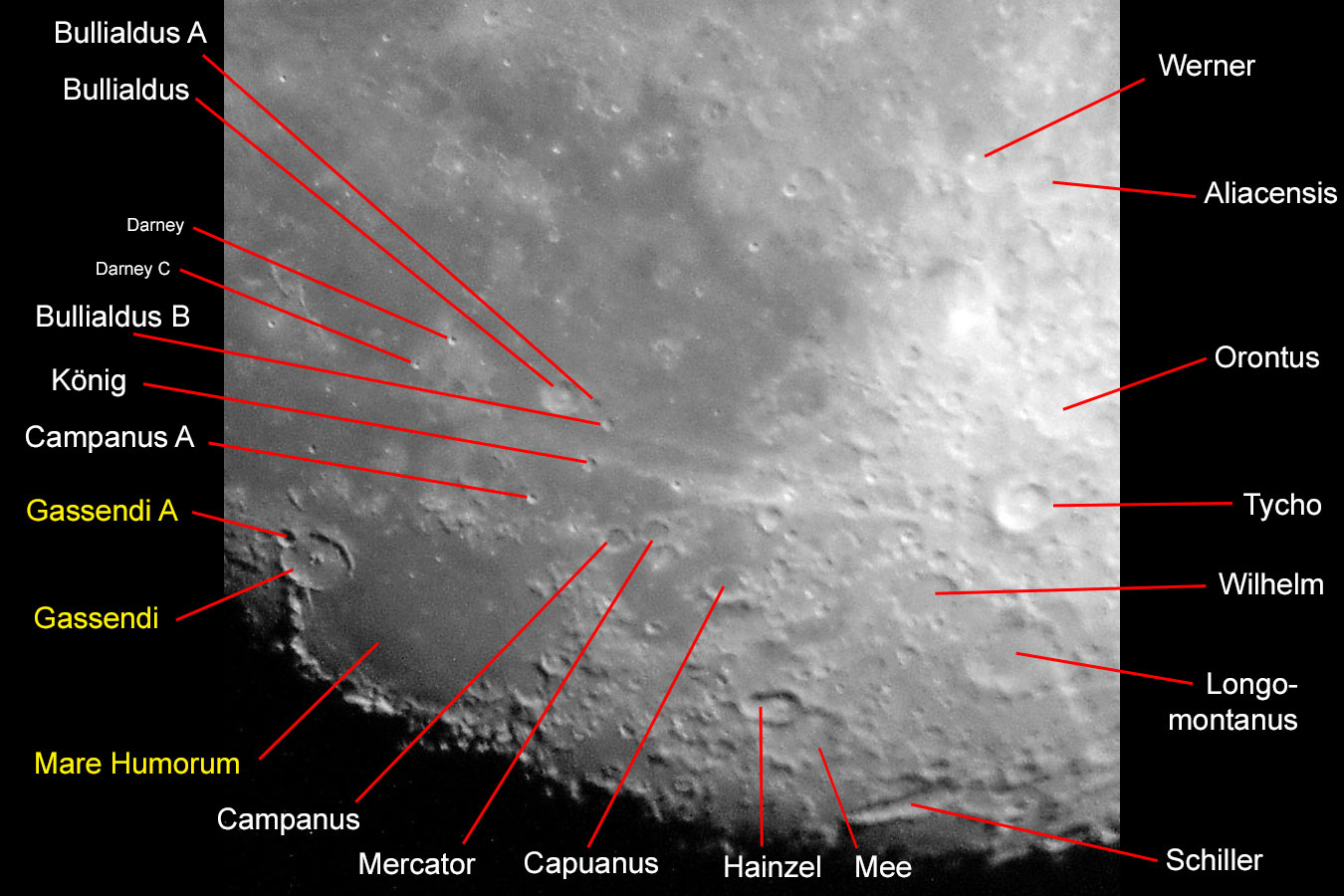 |
Photo data: February 26, 2018, Sky-Watcher Skymax-102-Teleskop, Ricoh GR held to the eyepiece
Dorsa Geikie is a wrinkle ridge at 4.6°S 52.5°E in Mare Fecunditatis on the Moon. It is approximately 220 km long
Dorsa Geiki is a group of ridges in Mare Fecunditatis and is approximately 220 km long (S&G).
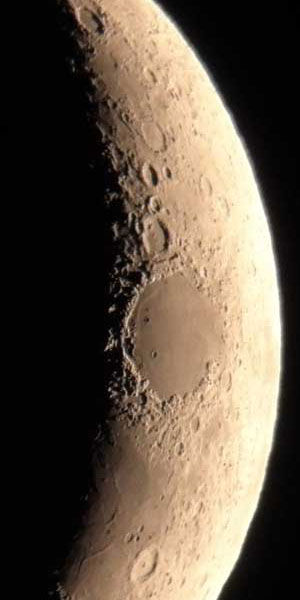 |
 |
Photo data: April 10, 2016, GSO GSD 680 telescope, Leica X Vario mounted fix to 32 mm DigiScope eyepiece
Grimaldi is a walled plain at the southwest edge of the moon with 173 km diameter and 3200 m depth (Spix; 222 km according to VMA). At full moon, the crater appears as a dark spot. I mostly photographed it too early and thus, did not really catch it. For space reasons, I only present photos with labels.
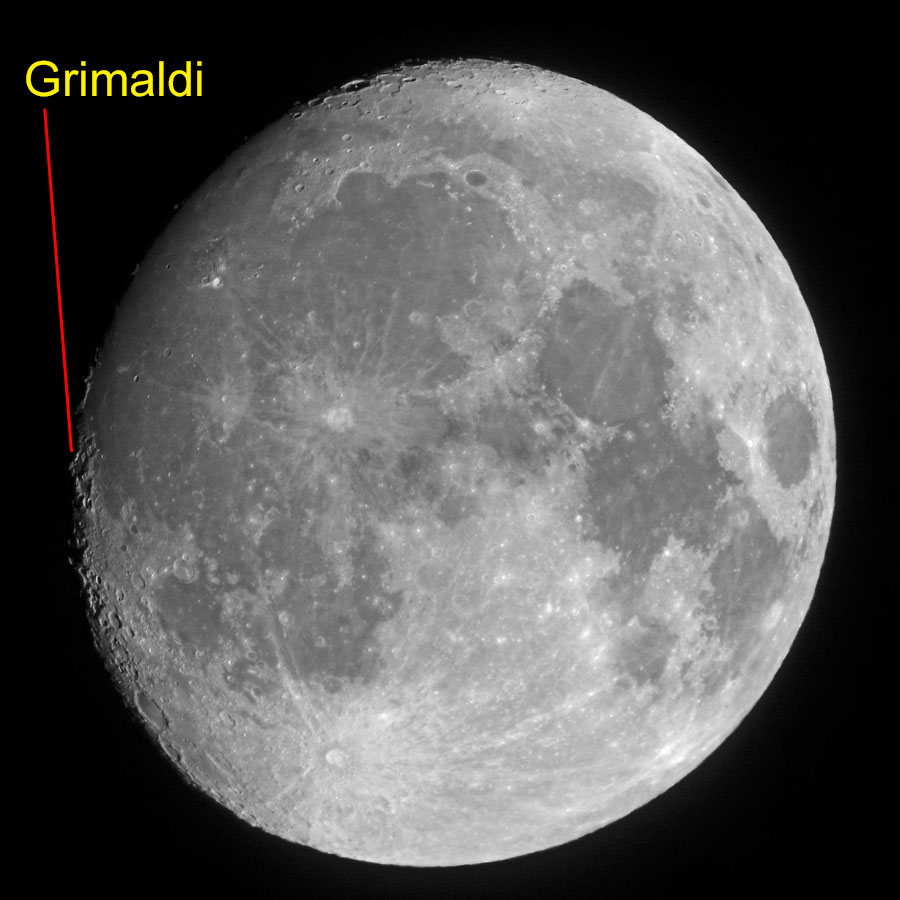 |
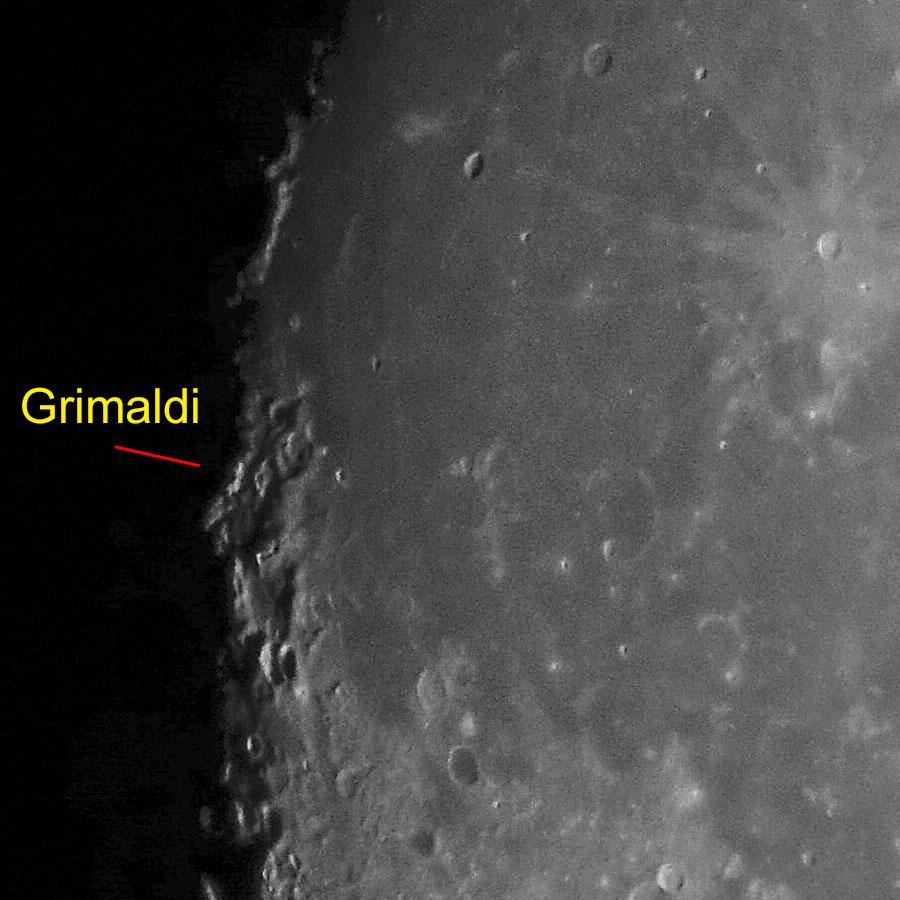 |
|
Section of the left photo |
Photo data: November 20, 2018, Omegon PS 72/432 refractor on Sky-Watcher AZ Pronto mount, Sony RX100 M4 attached to the 32 mm eyepiece, 3 x focal extender
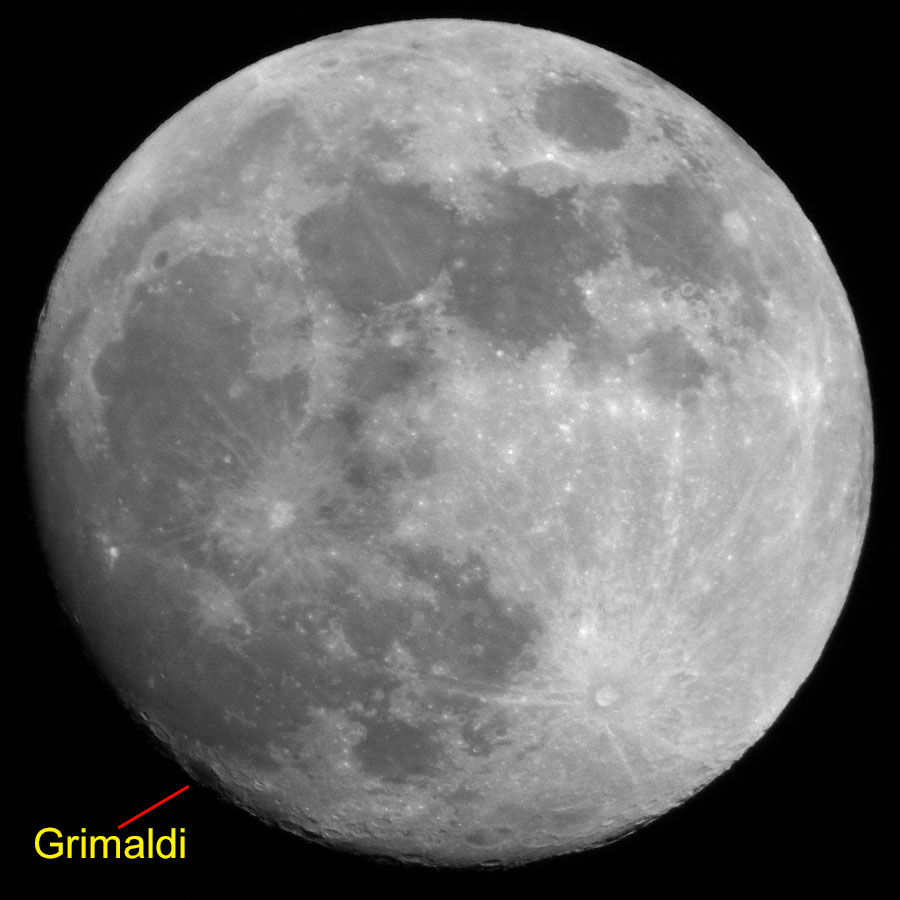 |
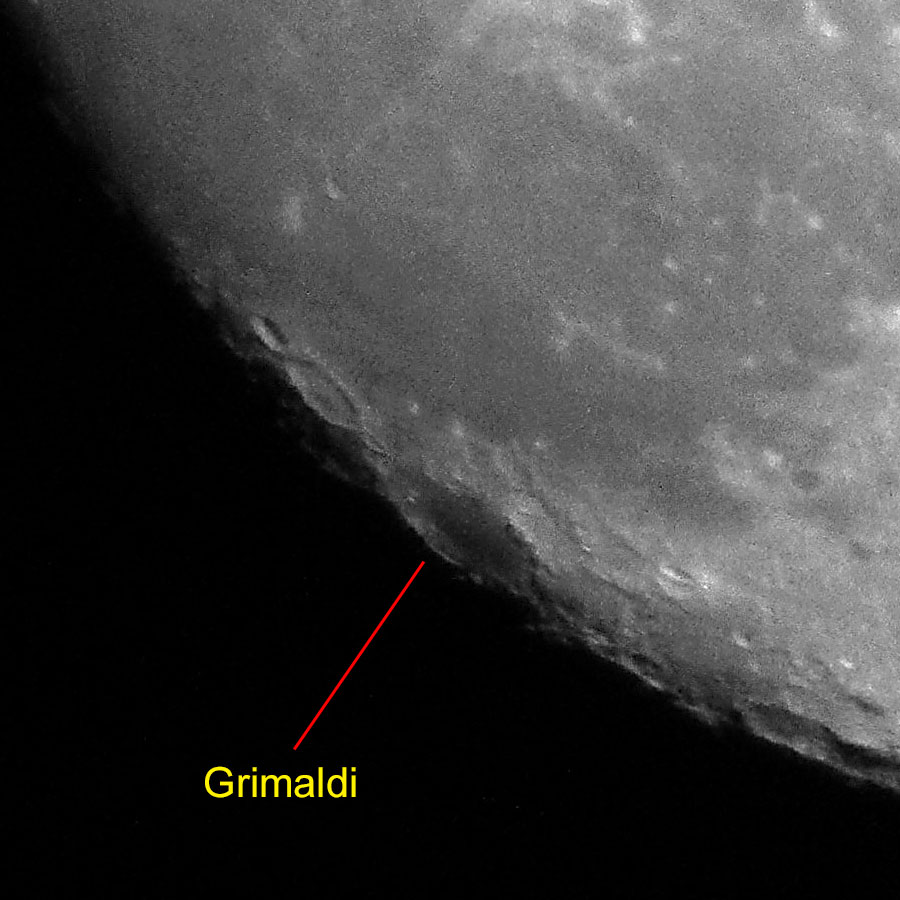 |
|
Section of the left photo |
||
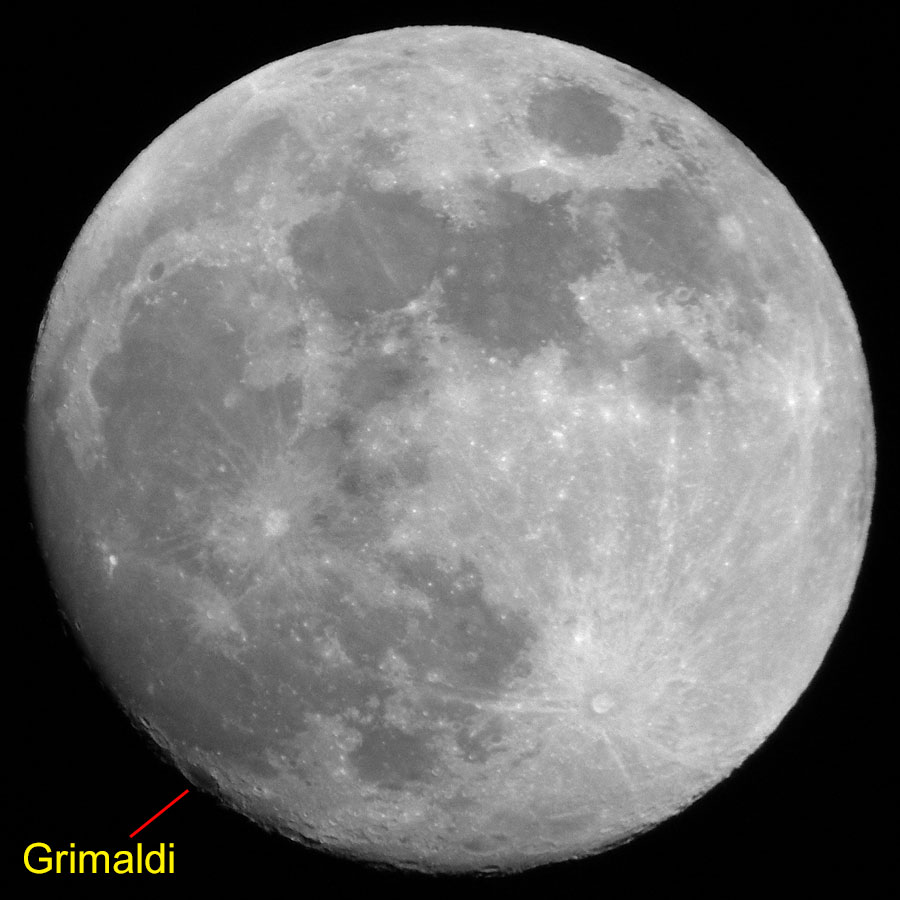 |
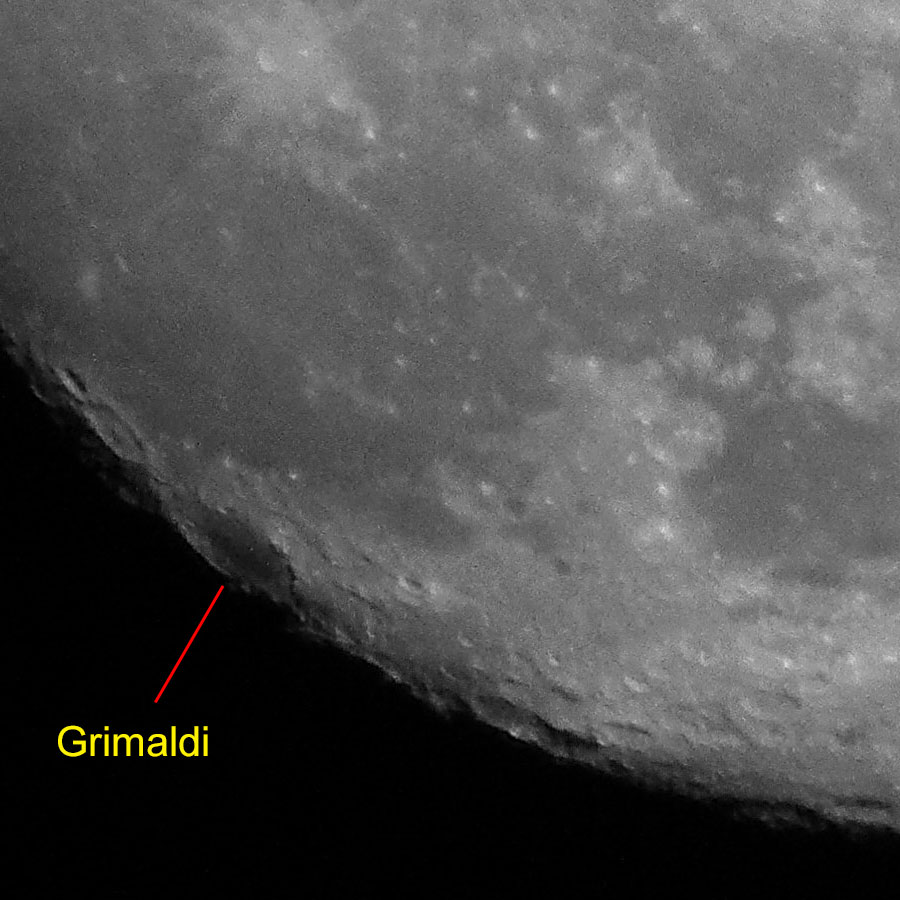 |
|
Section of the left photo |
Photo data: February 28, 2018, Sky-Watcher Skymax-127 telescope, Leica X Vario attached to the 32 mm eyepiece
The crater Hercules can already be seen a few days after New Moon and, together with Atlas, appears as a pair of craters. Hercules is 69 km in diameter and 2300 m deep (Spix; 70 km and 3200 m according to VMA). The following photos demonstrate how the terminator moves to the west.
 |
 |
Photo data: August 15, 2018, Sky-Watcher Skymax-127 telescope, Sony RX 100 M4 attached to the 32 mm eyepiece
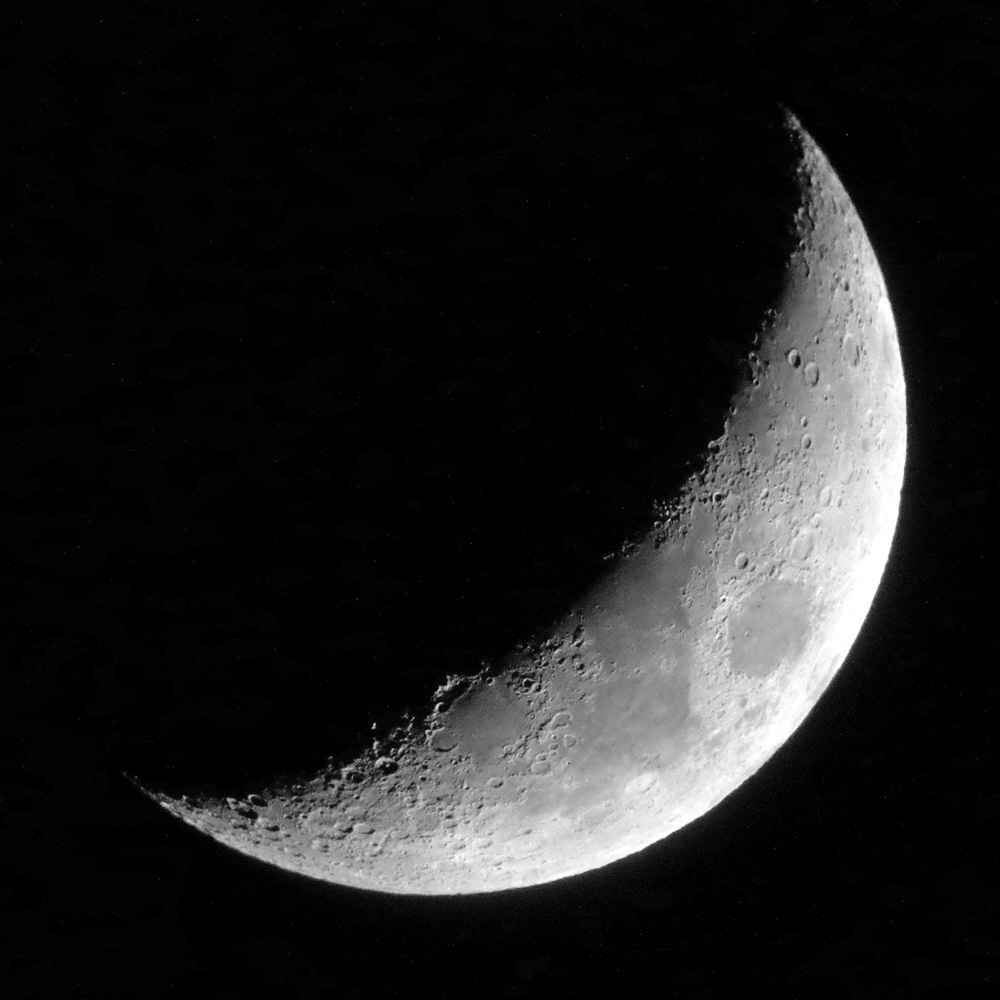 |
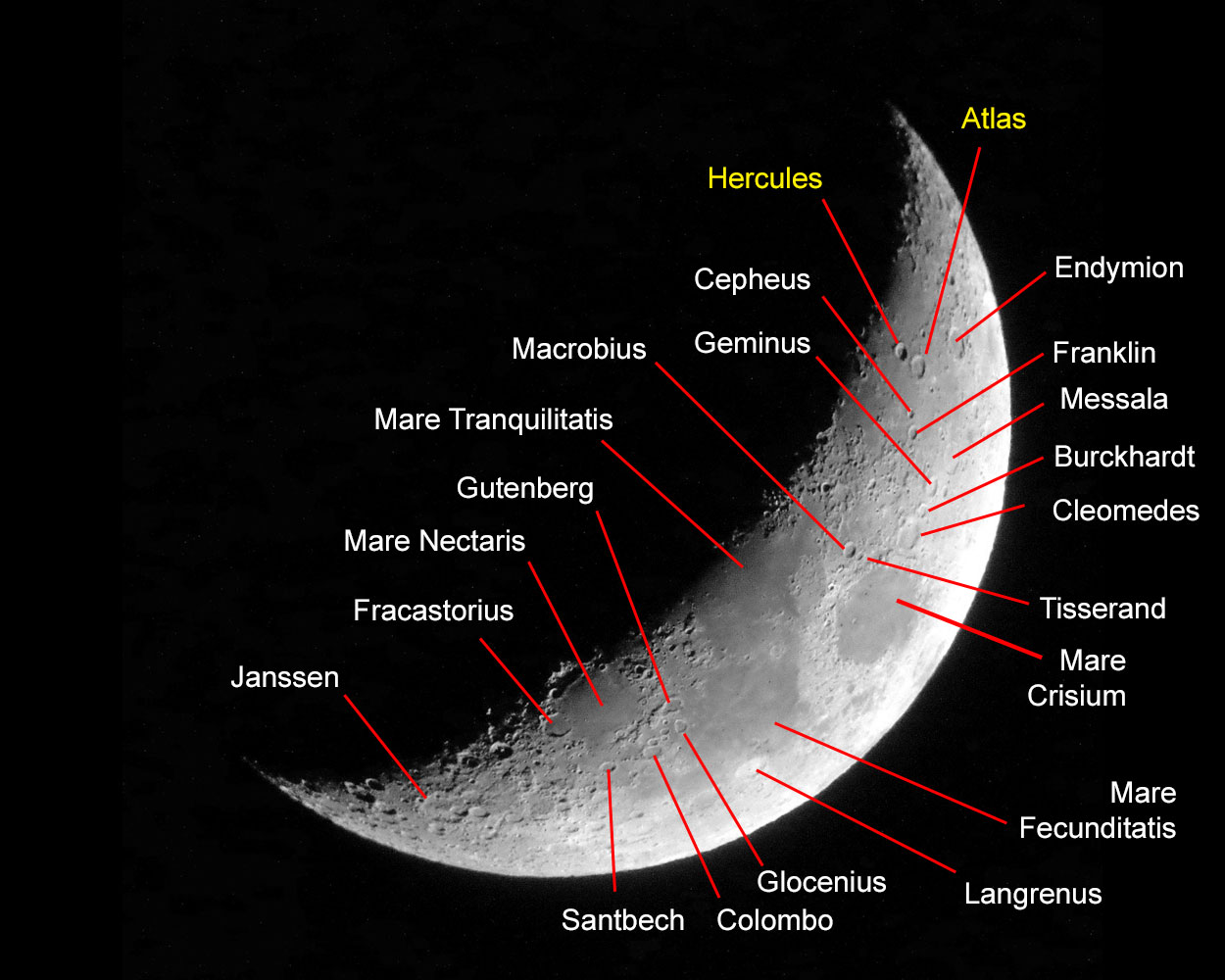 |
Photo data: April 1, 2017, Sky-Watcher Explorer 150PDS telescope, Ricoh GR held to the 16 mm UWA eyepiece
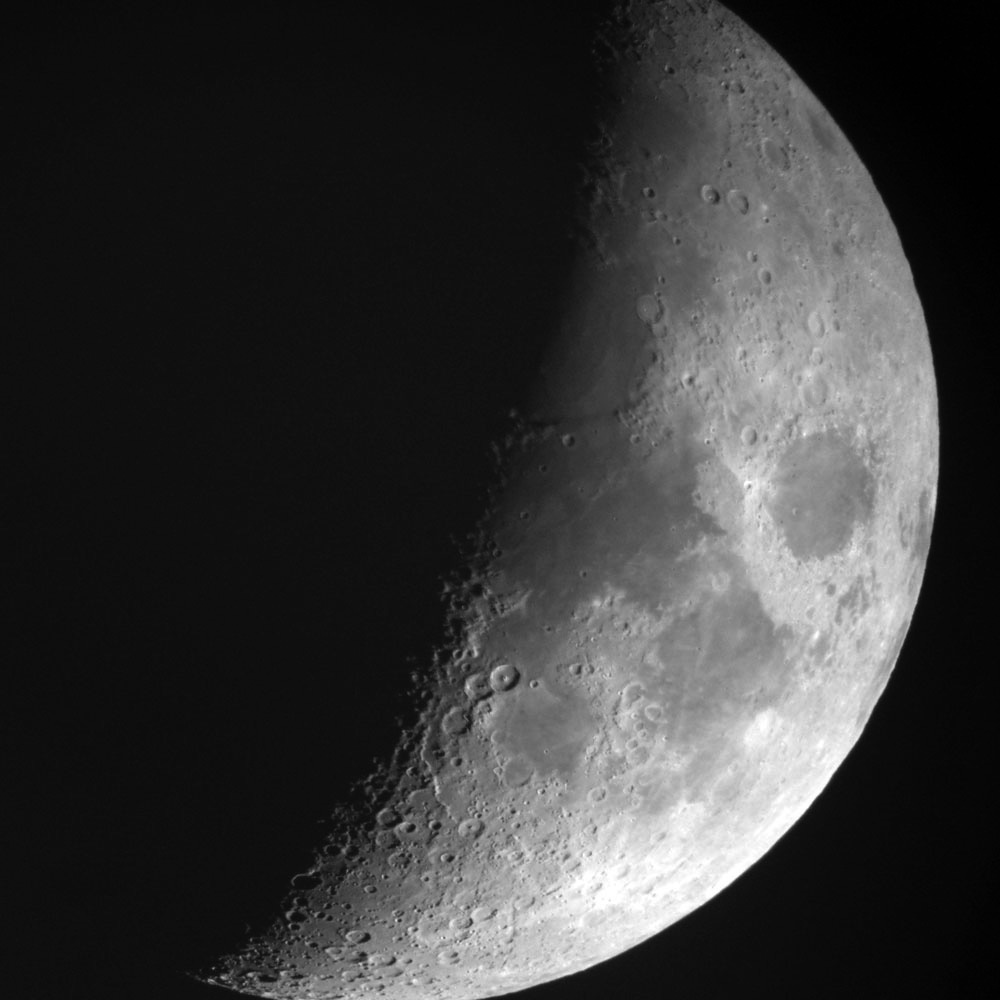 |
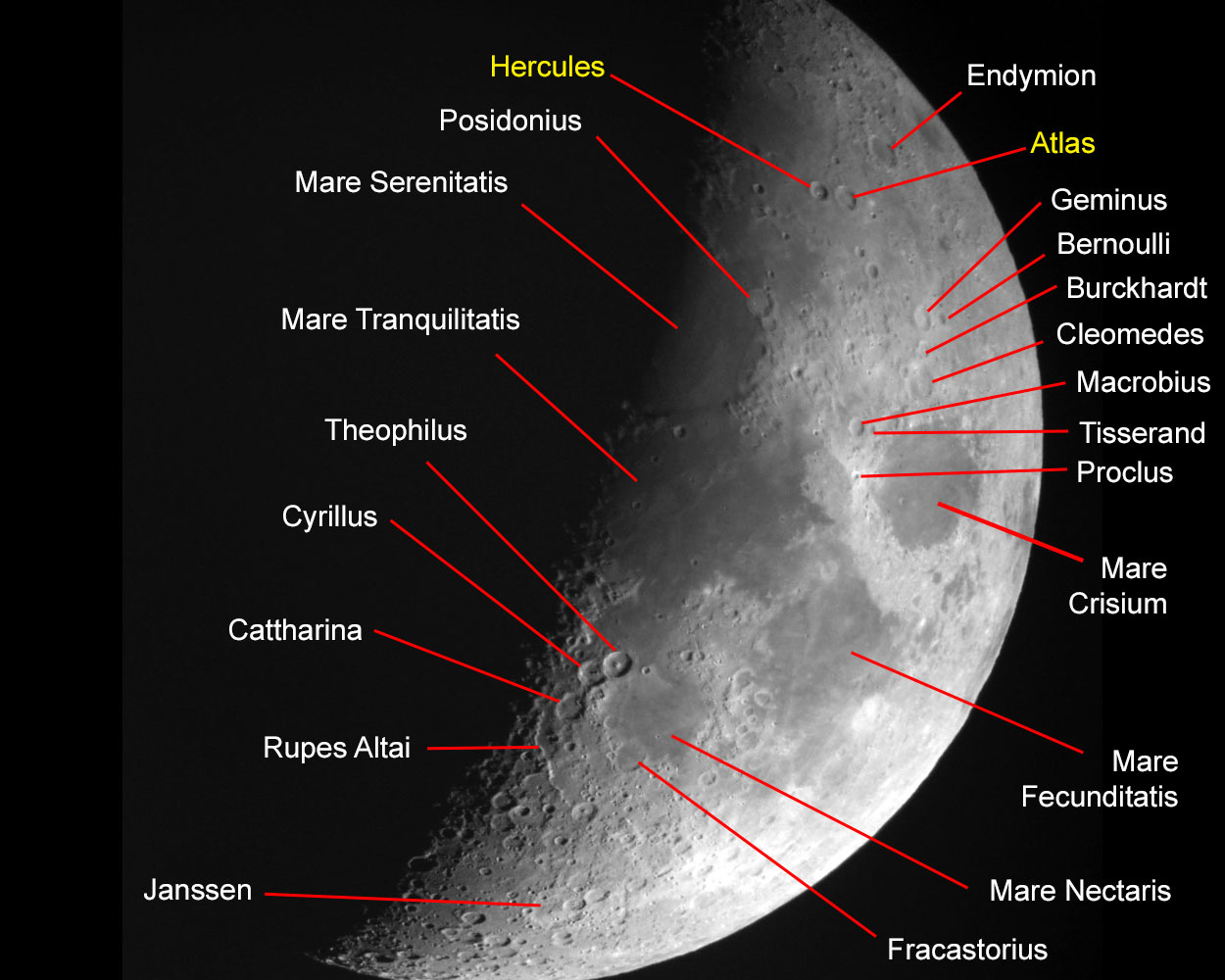 |
Photo data: April 2, 2017, Sky-Watcher Explorer 150PDS-Teleskop, Ricoh GR held to the 7 mm UWA eyepiece
 |
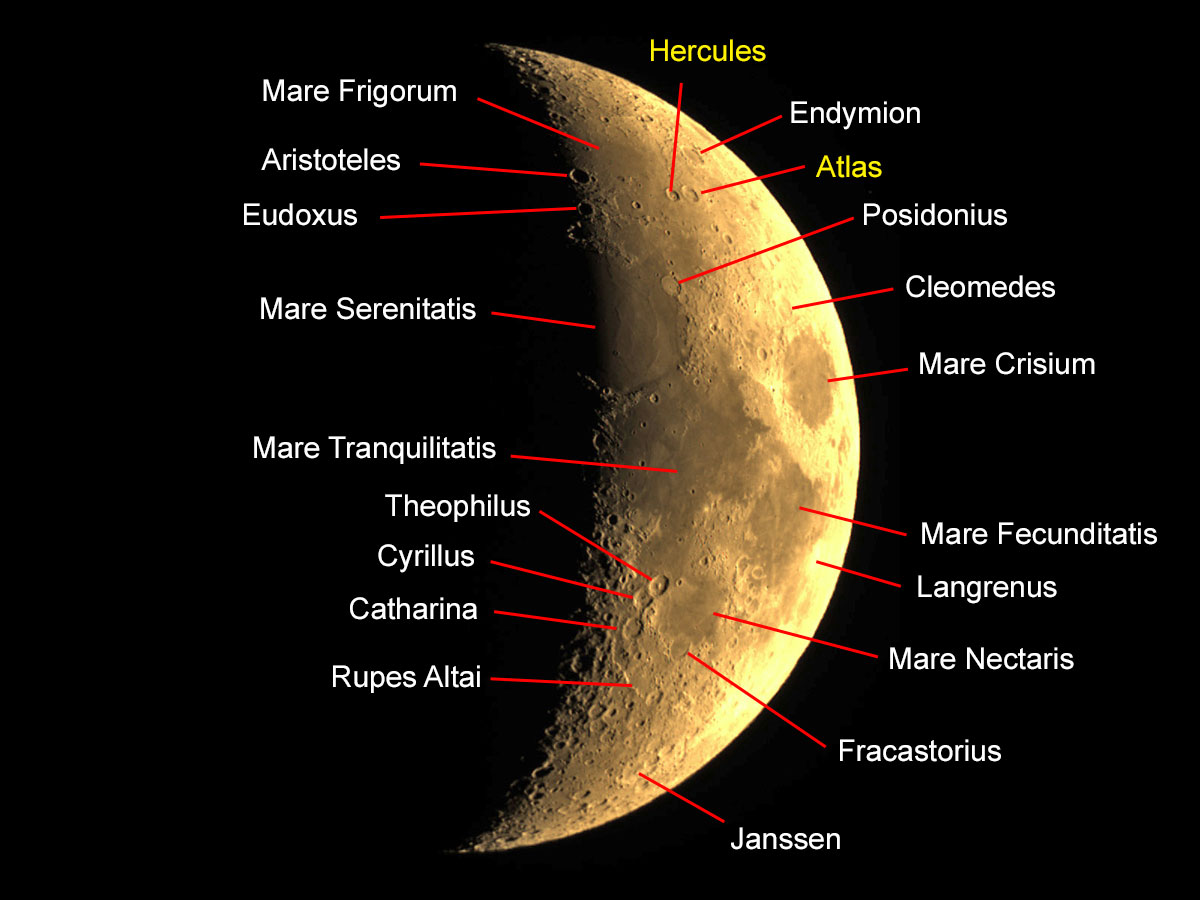 |
|
Mit 16 mm-Okular |
Photo data: February 21, 2018, Sky-Watcher Explorer 150PDS telescope, Atik Inifinity camera
The walled plain Hipparchus is an old crater and accordingly fissured and covered with impacts. It has a diameter of 138 km and is 1100 m deep (Spix; 151 km according to VMA).
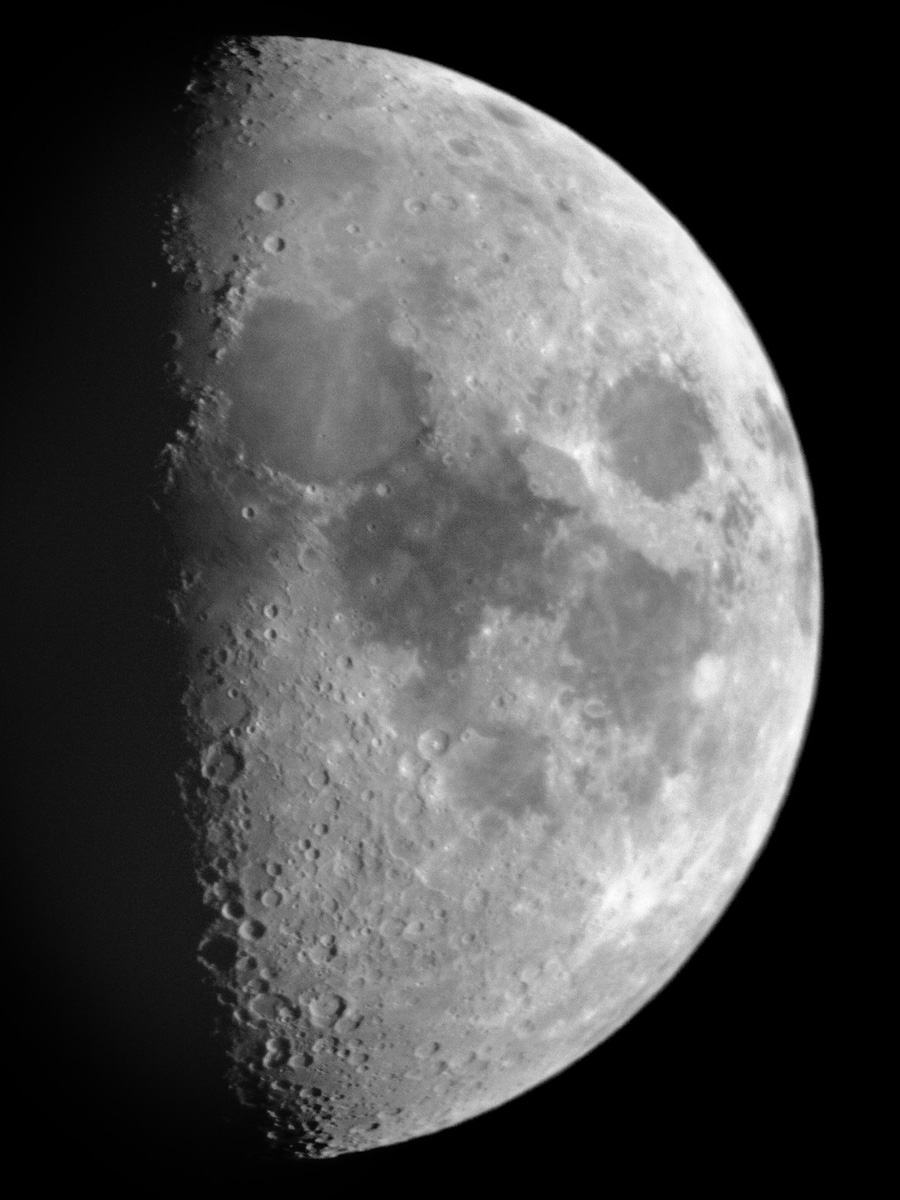 |
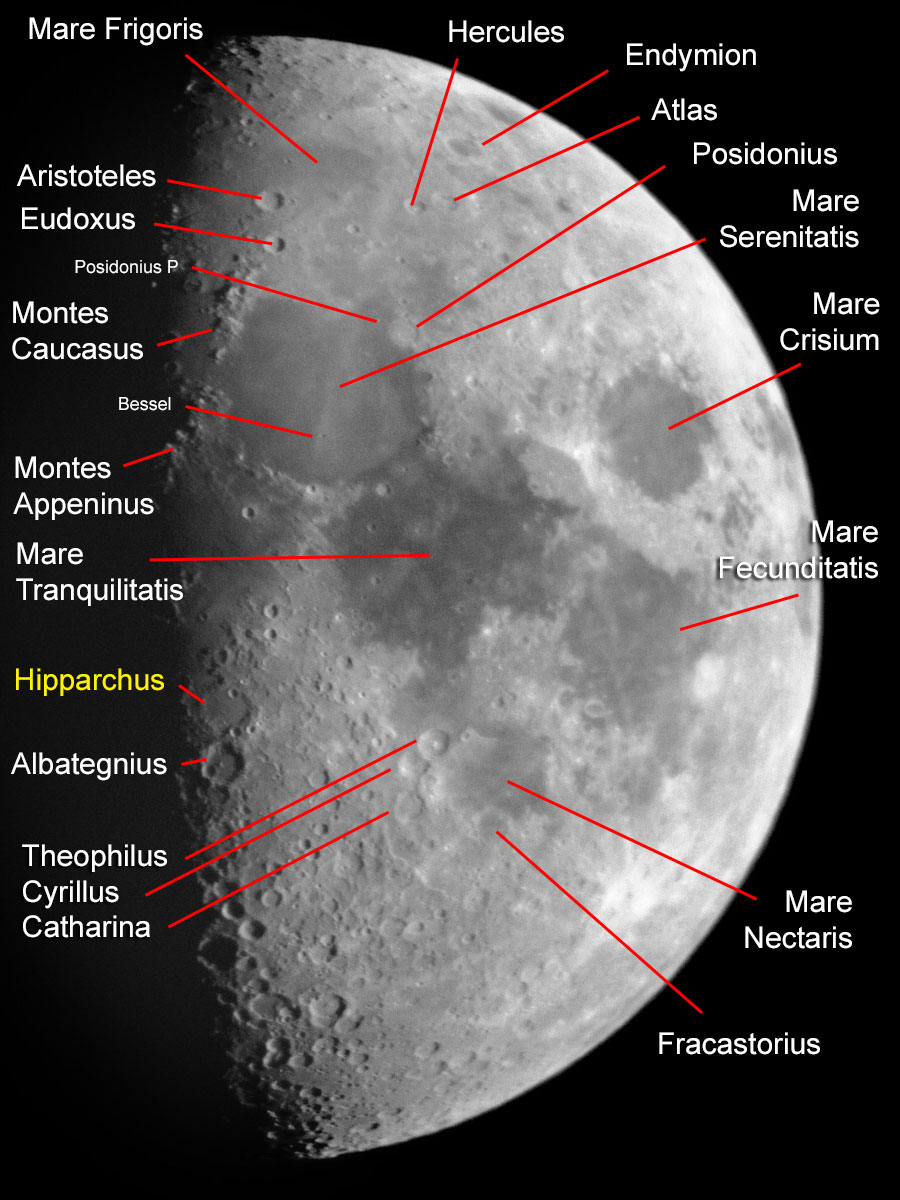 |
Photo data: April 14, 2016, Sky-Watcher Heritage P130 telescope, Leica M (Typ 240) with 50 mm lens, held to 16 mm UWA eyepiece
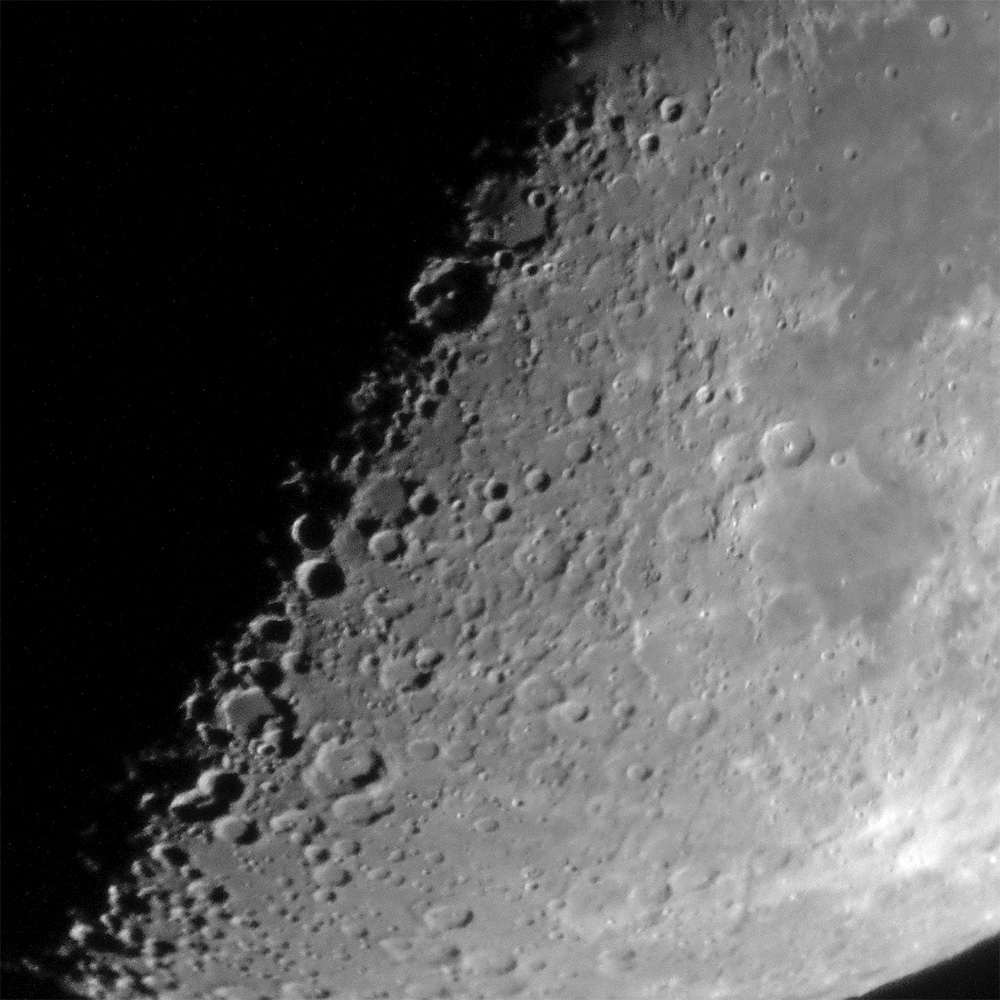 |
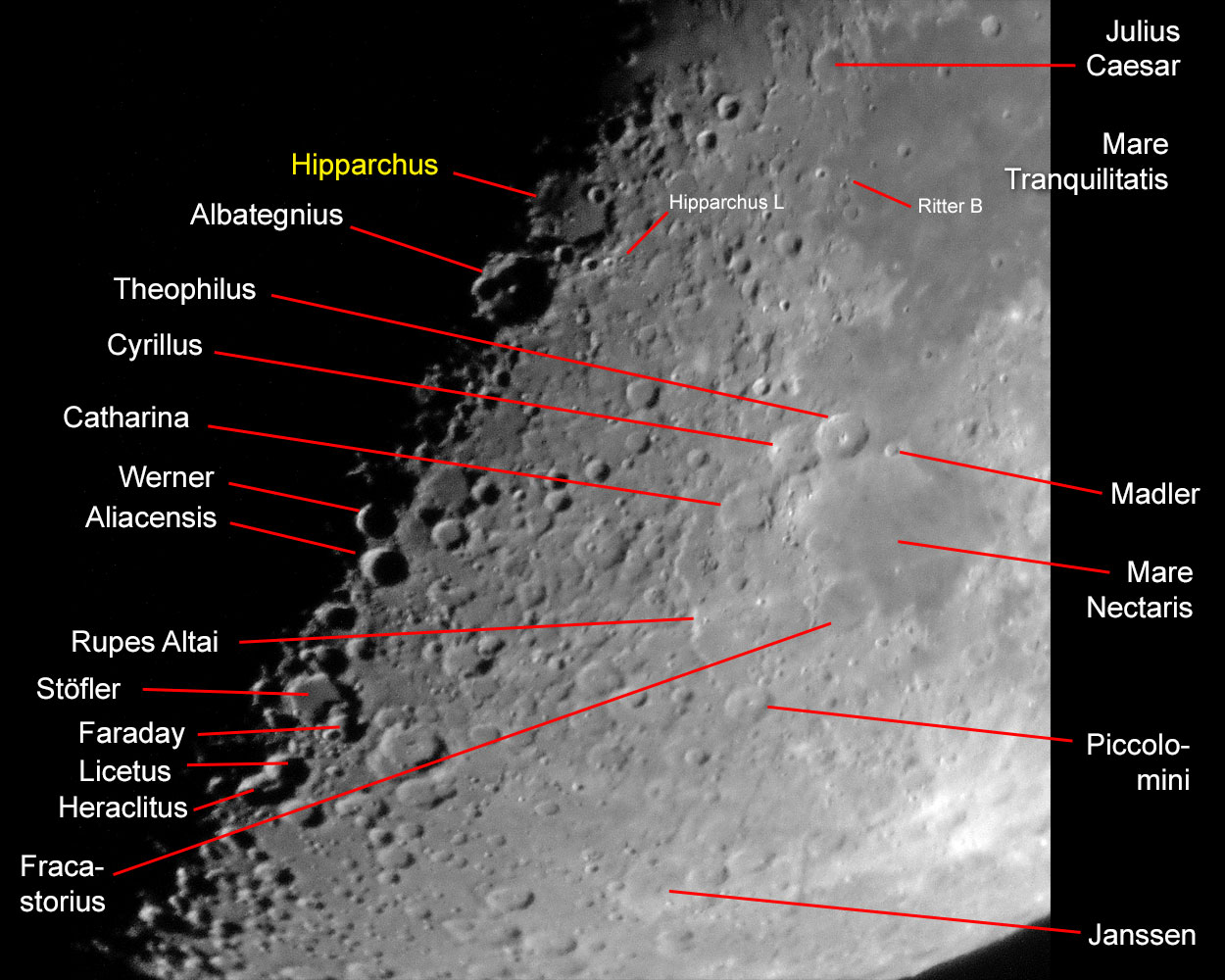 |
Photo data: April 4, 2017 just after midnight, Sky-Watcher Skymax-102 telescope, Ricoh GR held to the 16 mm UWA eyepiece
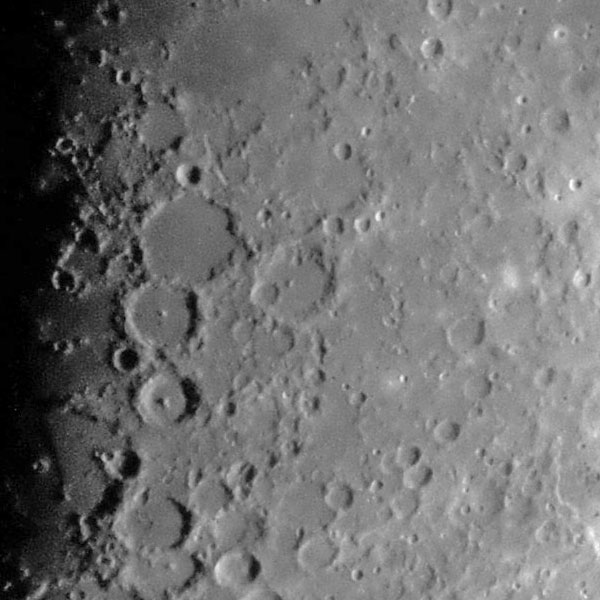 |
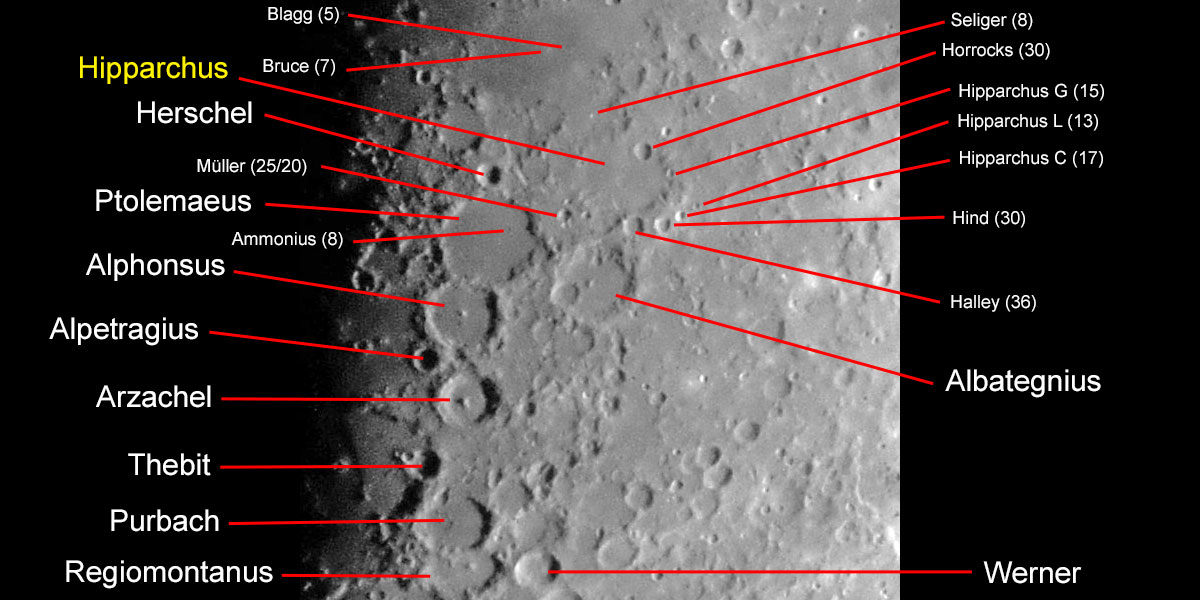 |
|
100% section from a photo |
Examples of small craters with diameters in km |
Photo data: February 23, 2018 in the evening, Sky-Watcher Skymax-102 telescope, Ricoh GR held to the eyepiece
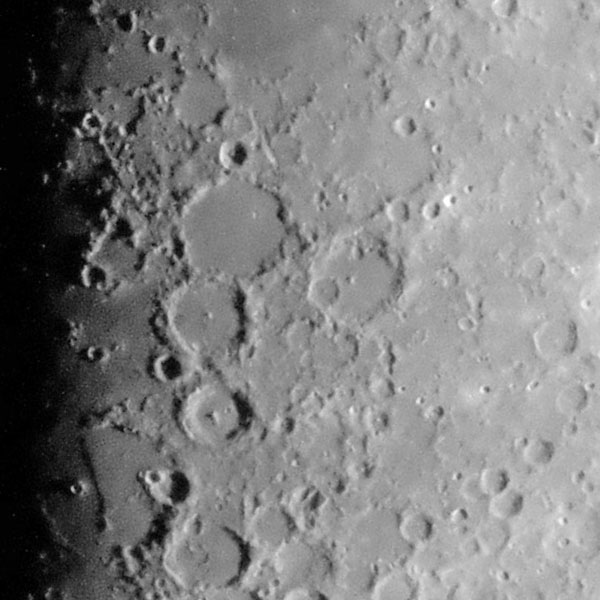 |
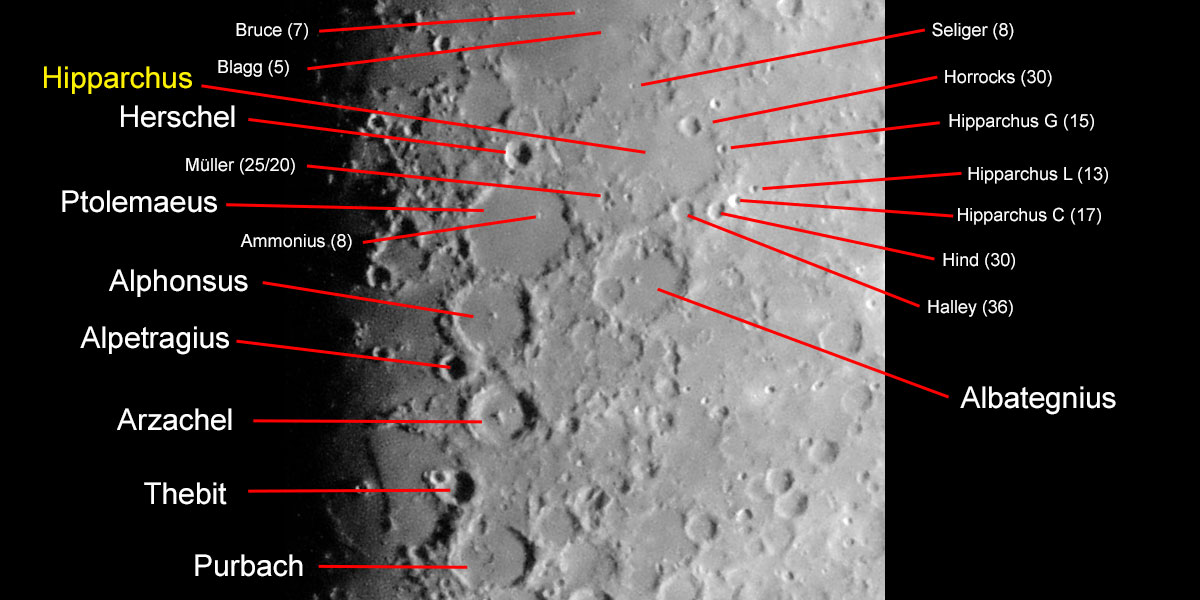 |
|
100% section from a photo |
Examples of small craters with diameters in km |
Photo data: February 23, 2018 late in the evening, Sky-Watcher Skymax-127 telescope, Ricoh GR held to the eyepiece
The Mare Humorum (Sea of Humidity) in the south of the moon is relatively sharply defined and has a diameter of 420 km (Spix).
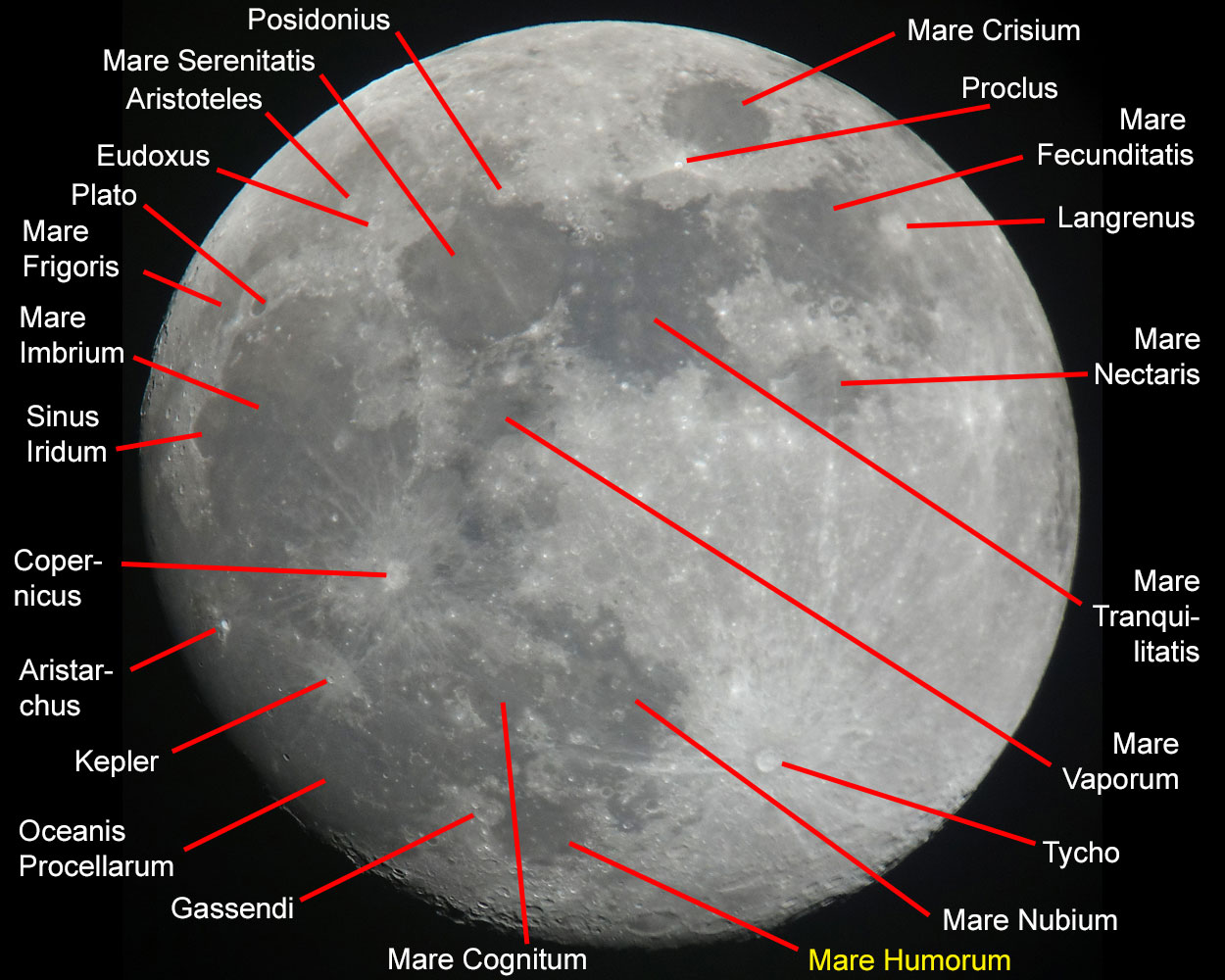 |
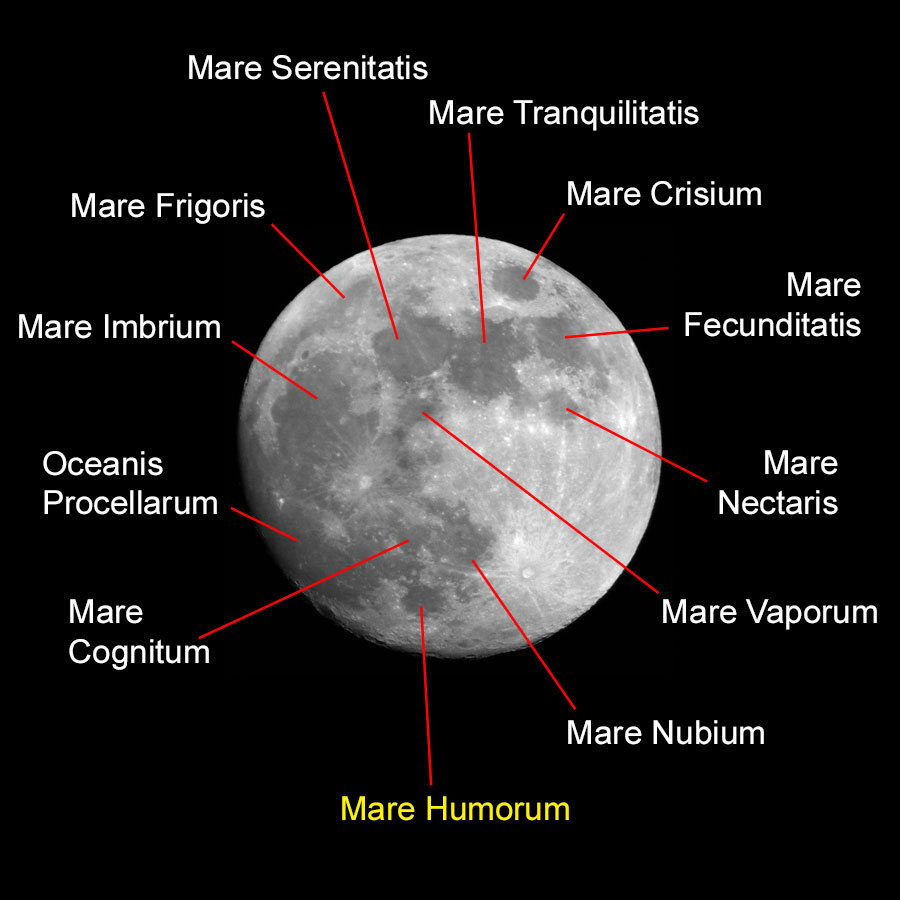 |
Photo data (left photo): March 29, 2018 (two days before Full Moon), Sky-Watcher
Skymax-127 OTA, Sony RX100 M4 attached to the 32 mm eyepiece
Photo data (right photo): February 28, 2010 (nearly Full Moon), Sky-Watcher
Skymax-127 OTA (probably), Leica X Vario (36 - 50 mm equiv.) held to a 32 mm
eyepiece (47 x)
Rima Hyginus (Hyginus Rille) with crater Hyginus (11 km in diameter) at about the center is a small line at the bottom of Mare Vaporum and hard to see.
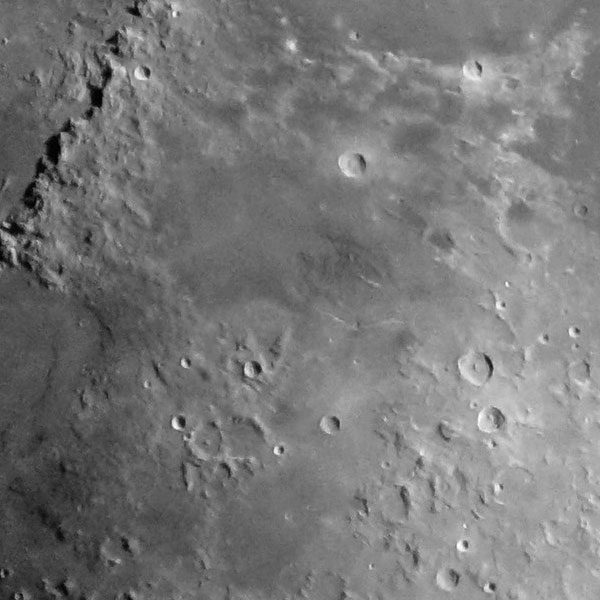 |
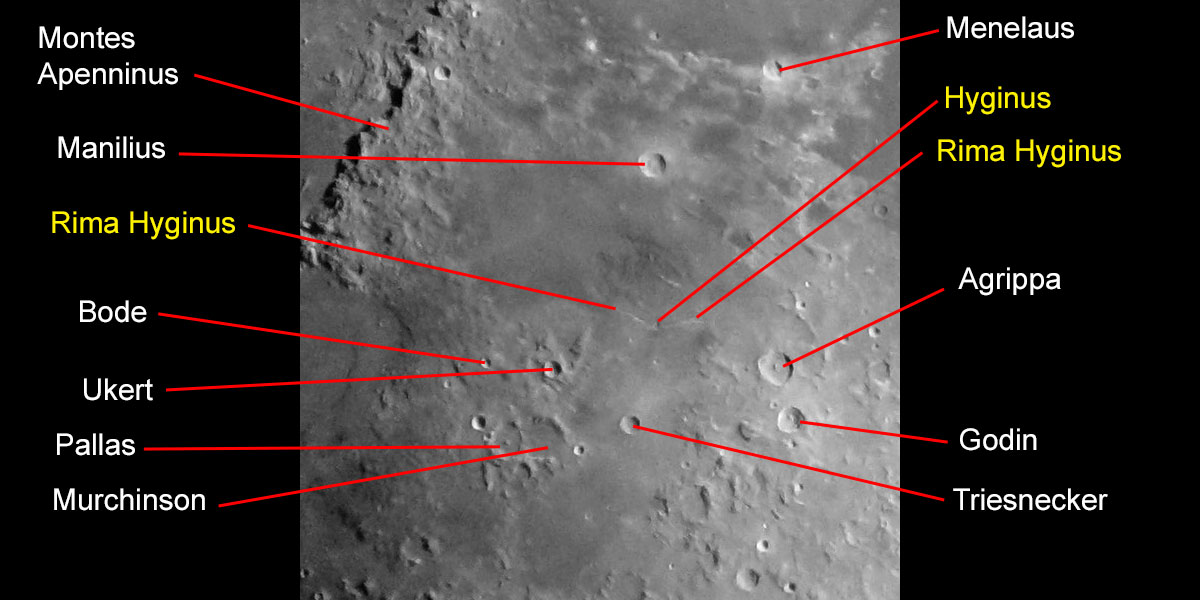 |
Photo data: March 25, 2018, Sky-Watcher Skymax-127 OTA, Sony RX100 M4 attached to the eyepiece
Mare Imbrium (Sea of Rain) in the west of the moon is the second largest moon sea and has a diameter of 1150 km (Spix). Around the Sea of Rain there are large mountain ranges such as the Alps, the Caucasus, the Carpathians, the Jura, and the Apennines.
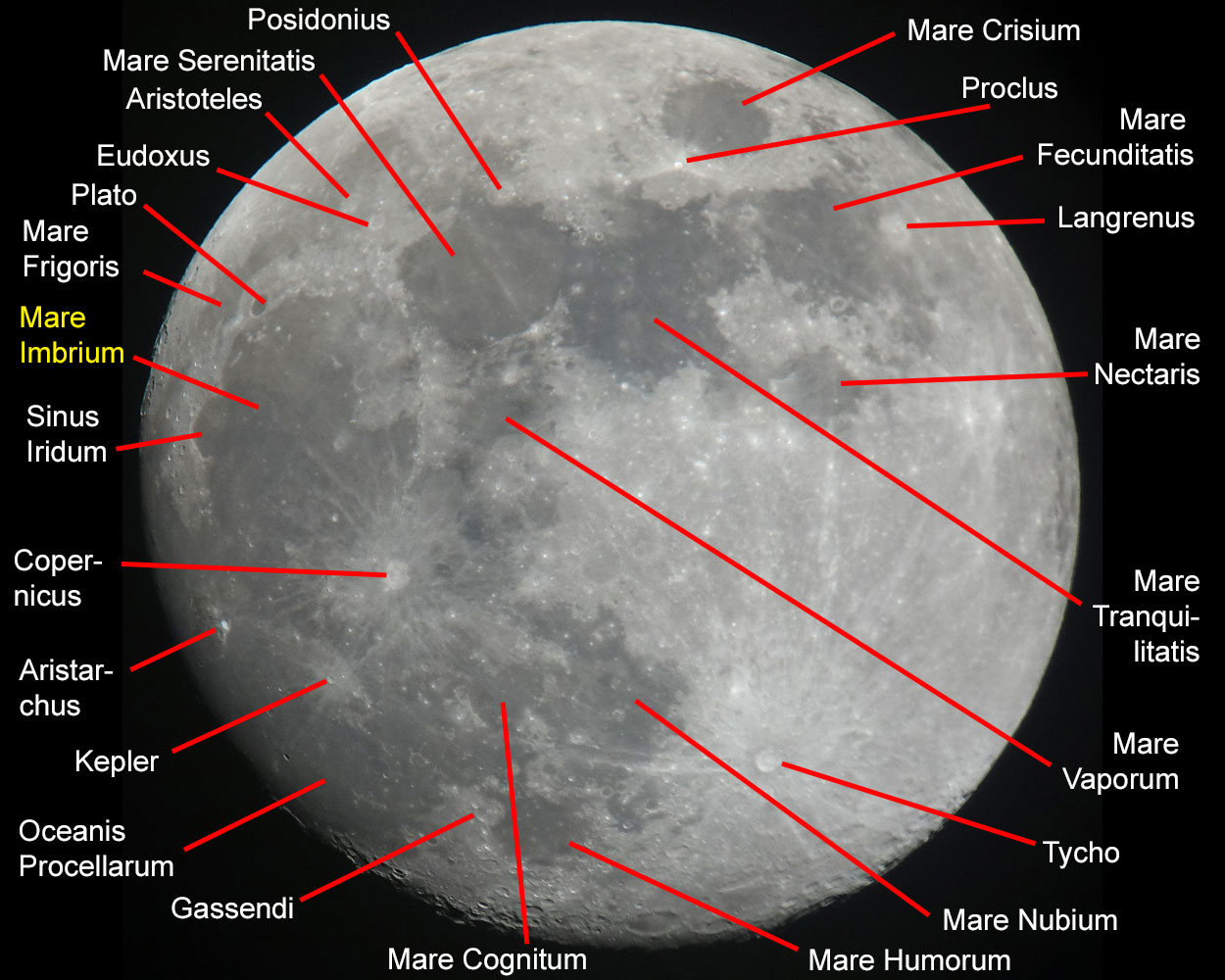 |
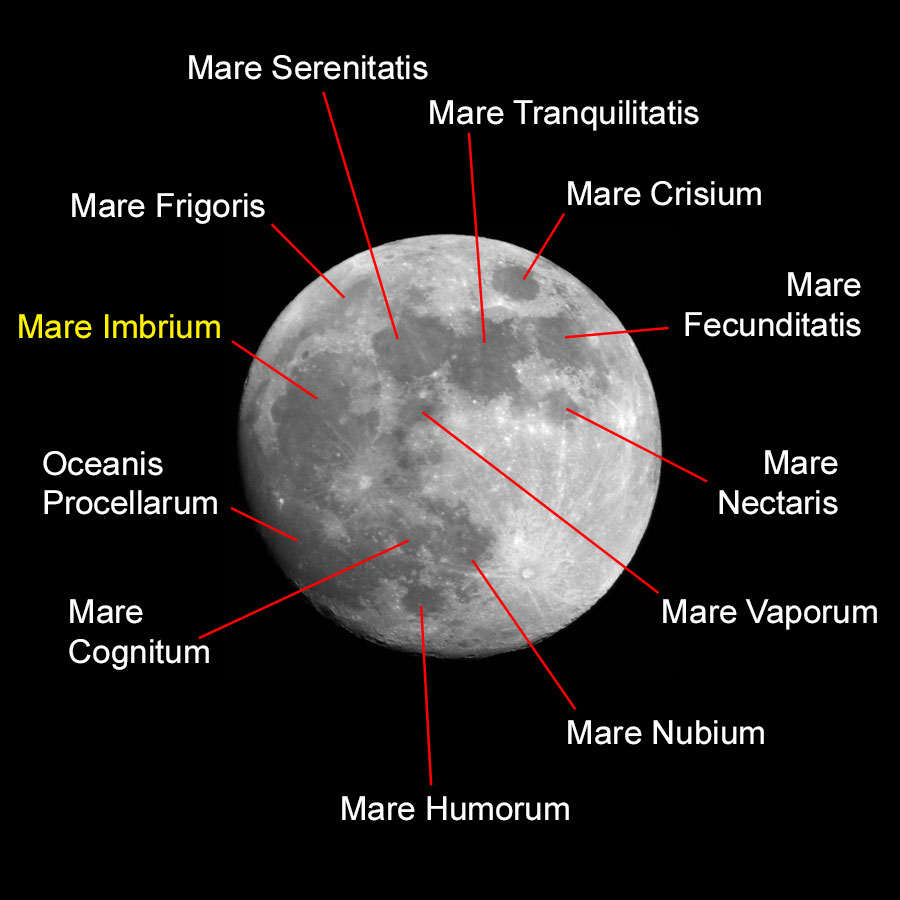 |
Photo data (left photo): March 29, 2018 (two days before Full Moon), Sky-Watcher
Skymax-127 OTA, Sony RX100 M4 attached to the 32 mm eyepiece
Photo data (right photo): February 28, 2010 (nearly Full Moon), Sky-Watcher
Skymax-127 OTA (probably), Leica X Vario (36 - 50 mm equiv.) held to a 32 mm
eyepiece (47 x)
Sinus Iridum (Rainbow Bay) is a semicircular bulge in the northwest of the Mare Imbrium with a diameter of 250 km (Spix). According to Spix, it is the remains of a crater; the crater rim is called Montes Jura (Jura mountains). When the Jura mountains appear at the terminator and are lighted by the sun while still extending "into the darkness", this phenomenon is called the "golden handle."
The following photo sections show the Jura mountains (top left) and the craters Plato (top) and Copernicus (bottom). Above and to the left of Copernicus you will find the Montes Carpatus. Note the "golden handle"!
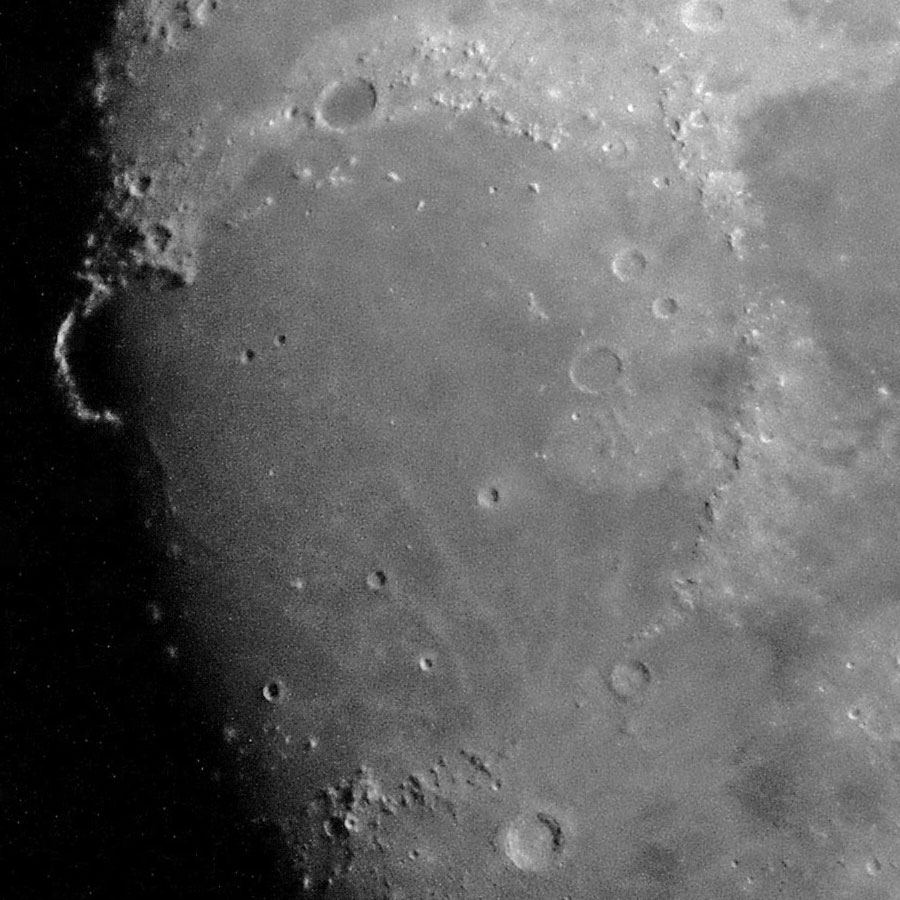 |
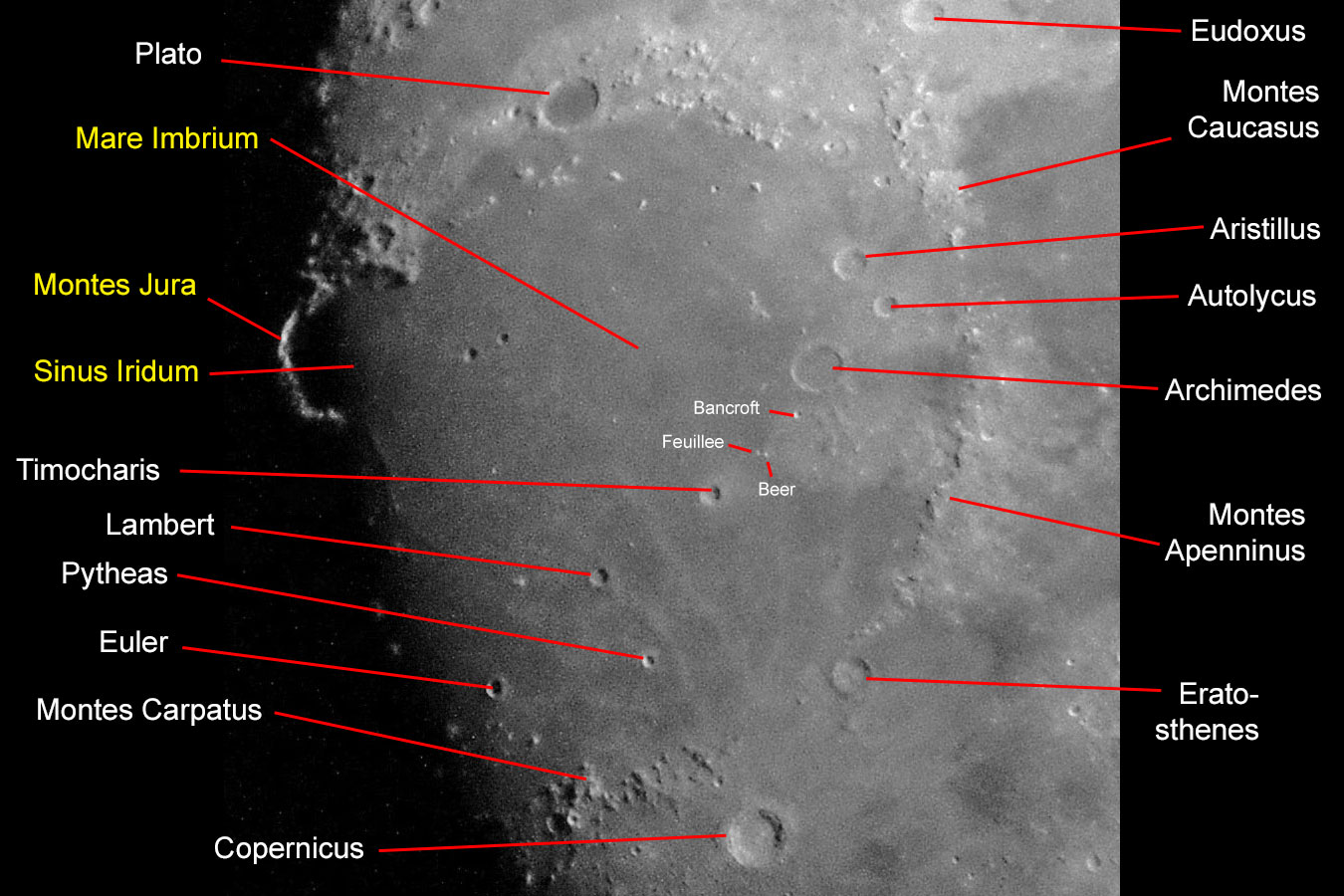 |
|
|
||
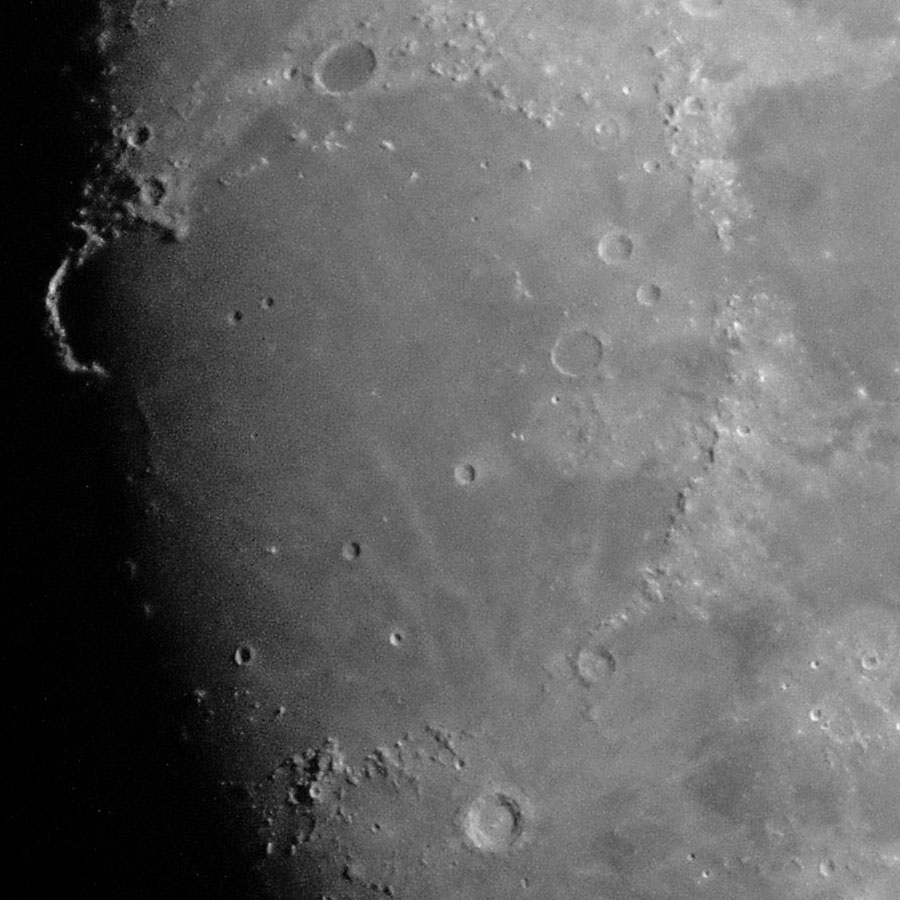 |
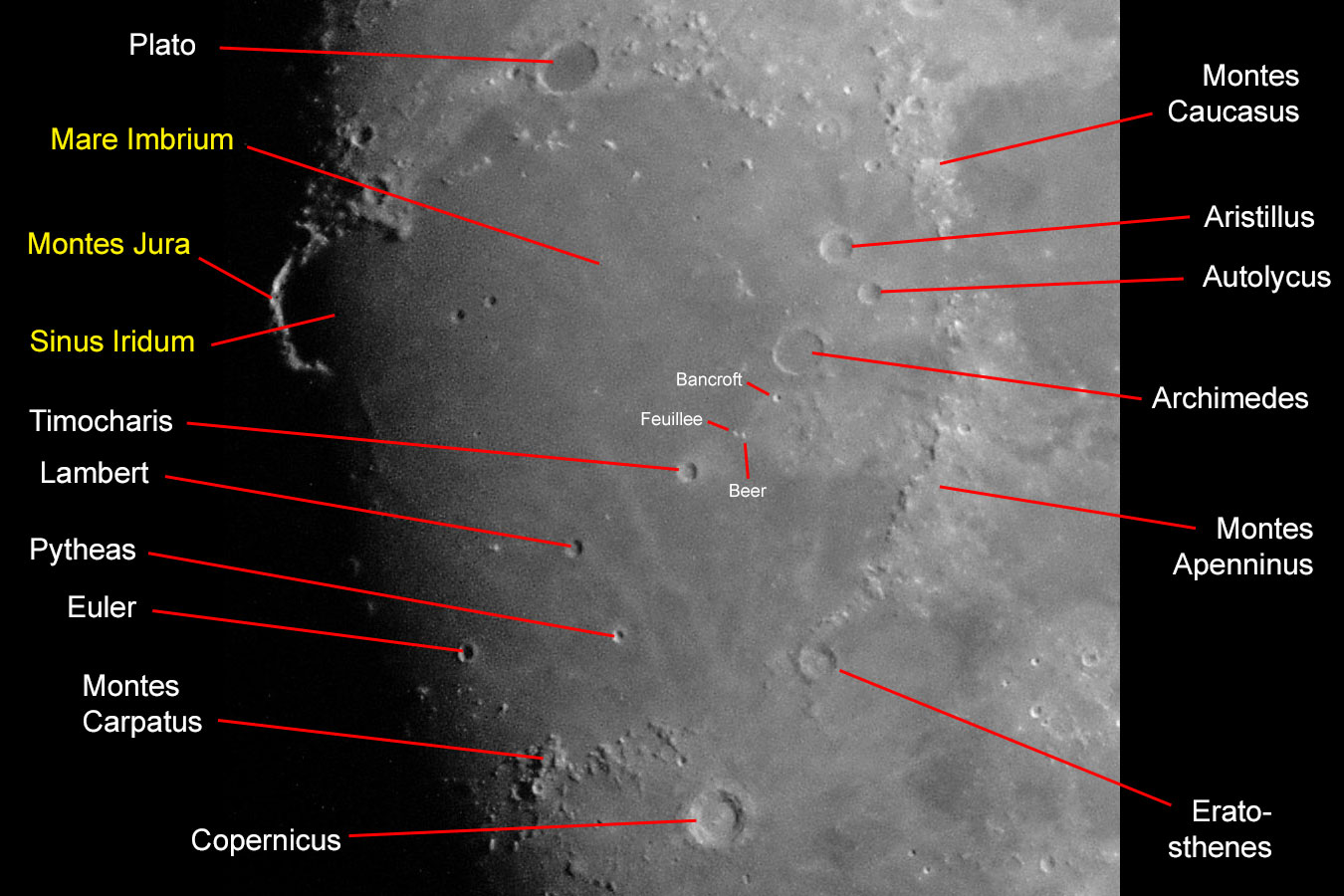 |
|
Photo data: February 25, 2018, Sky-Watcher Skymax-102 telescope, Ricoh GR held to the eyepiece
One day later, the terminator has left the Jura mountains. The following section from February 26, 2018 (three days after half moon) has been made lighter and shows again the Jura mountains (top left) and the craters Plato (top) and Copernicus (bottom). Above and to the left of Copernicus you will once again find the Montes Carpatus.
 |
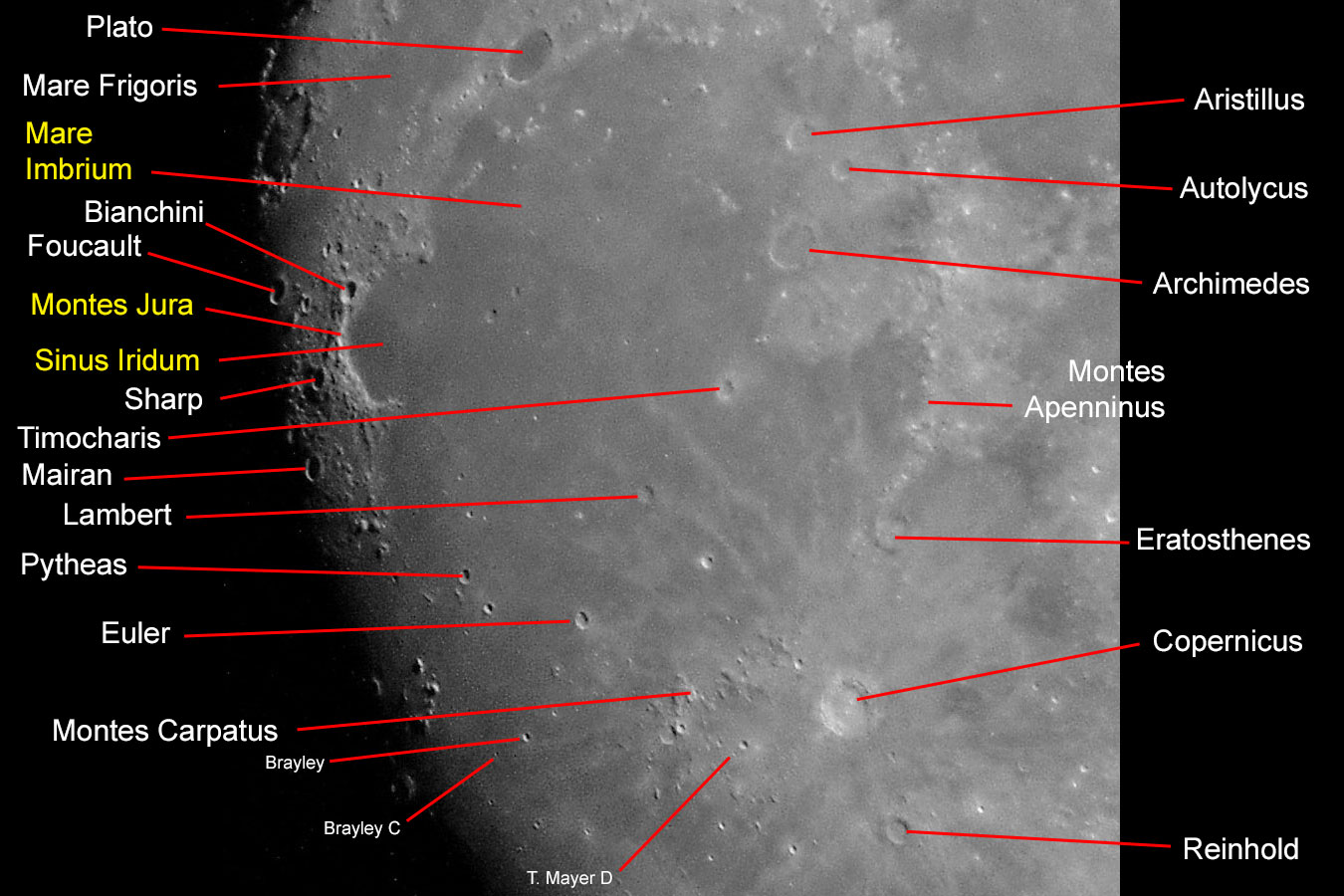 |
Photo data: February 26, 2018, Sky-Watcher Skymax-102 telescope, Ricoh GR held to the eyepiece
The walled plain Hipparchus is also an old crater and accordingly fissured and covered with impacts. It has a diameter of 200 km and is 2700 m deep (Spix; 1951 km according to VMA).
 |
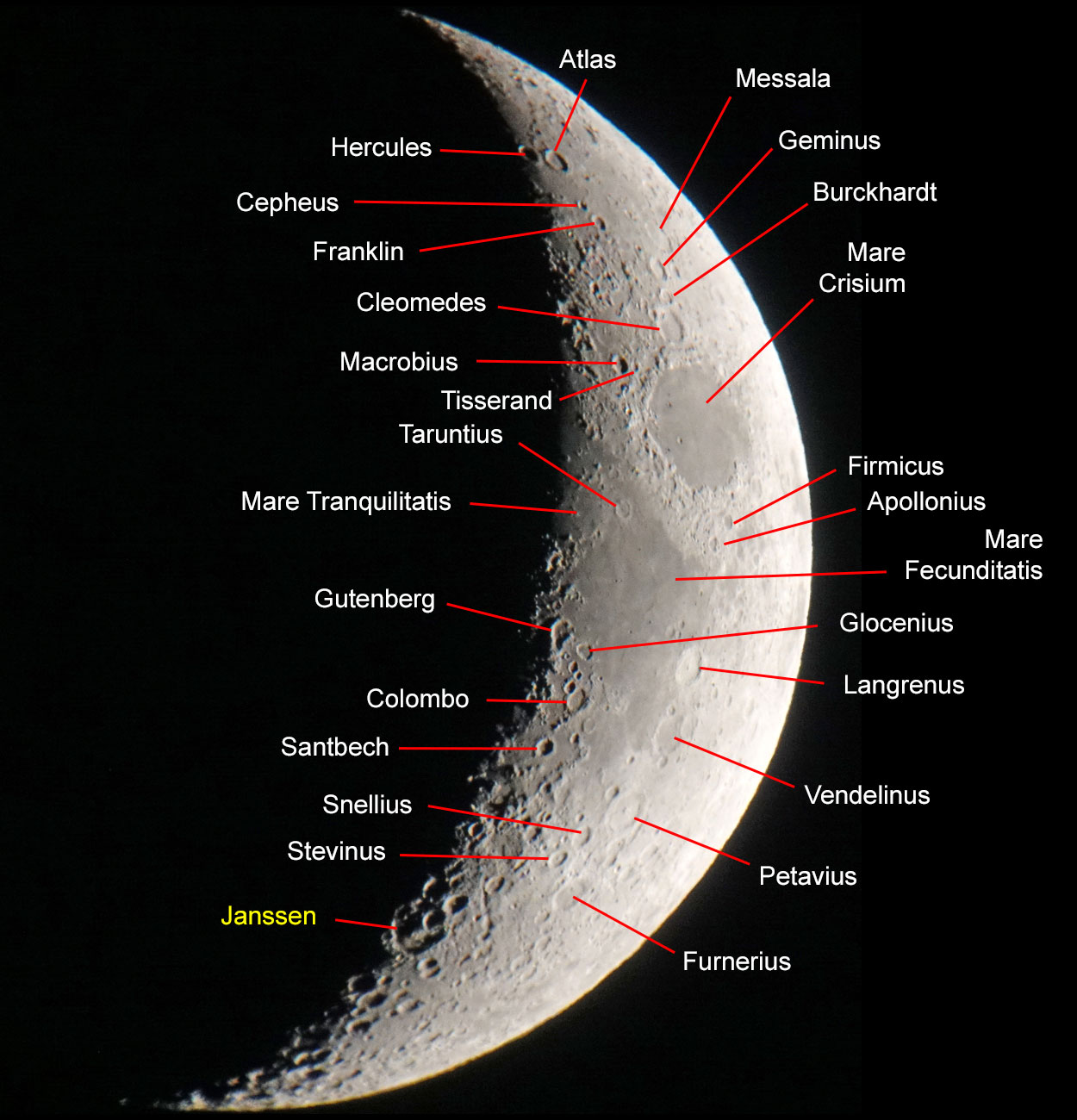 |
Photo data: August 15, 2018, Sky-Watcher Skymax-127 telescope, Sony RX 100 M4 attached to the 32 mm eyepiece
 |
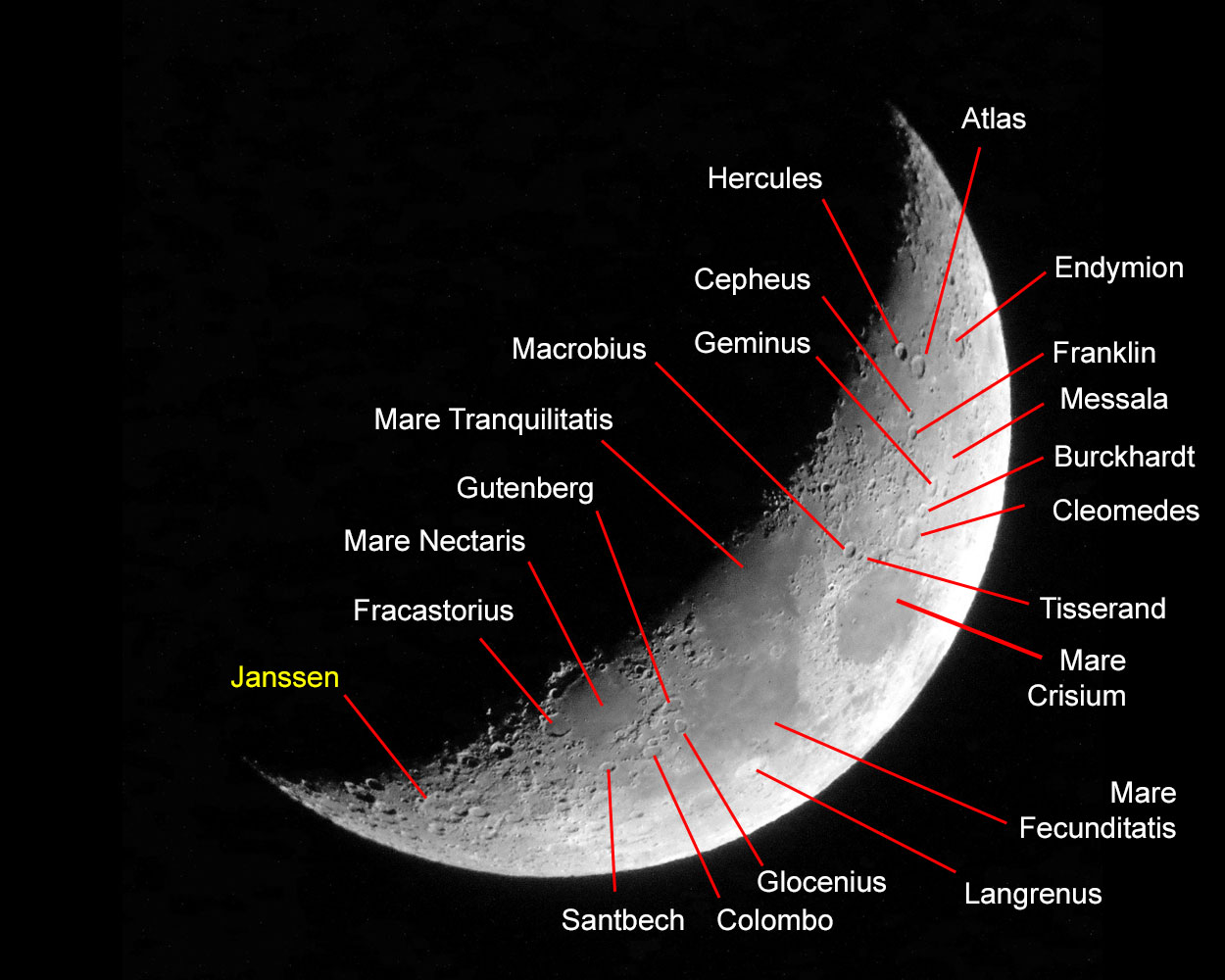 |
Photo data: April 1, 2017, Sky-Watcher Explorer 150PDS telescope, Ricoh GR held to the 16 mm UWA eyepiece
 |
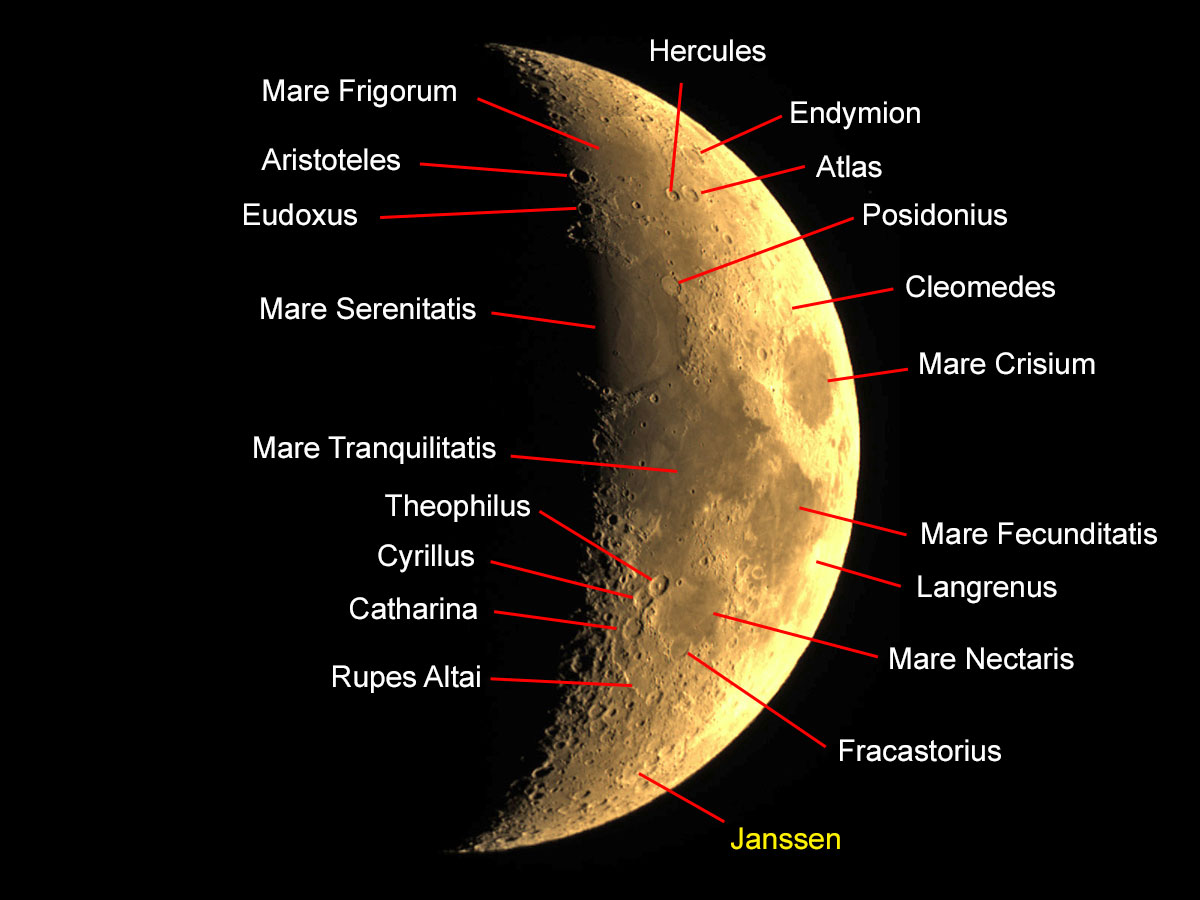 |
Photo data: February 21, 2018, Sky-Watcher Explorer 150PDS telescope, Atik Inifinity camera
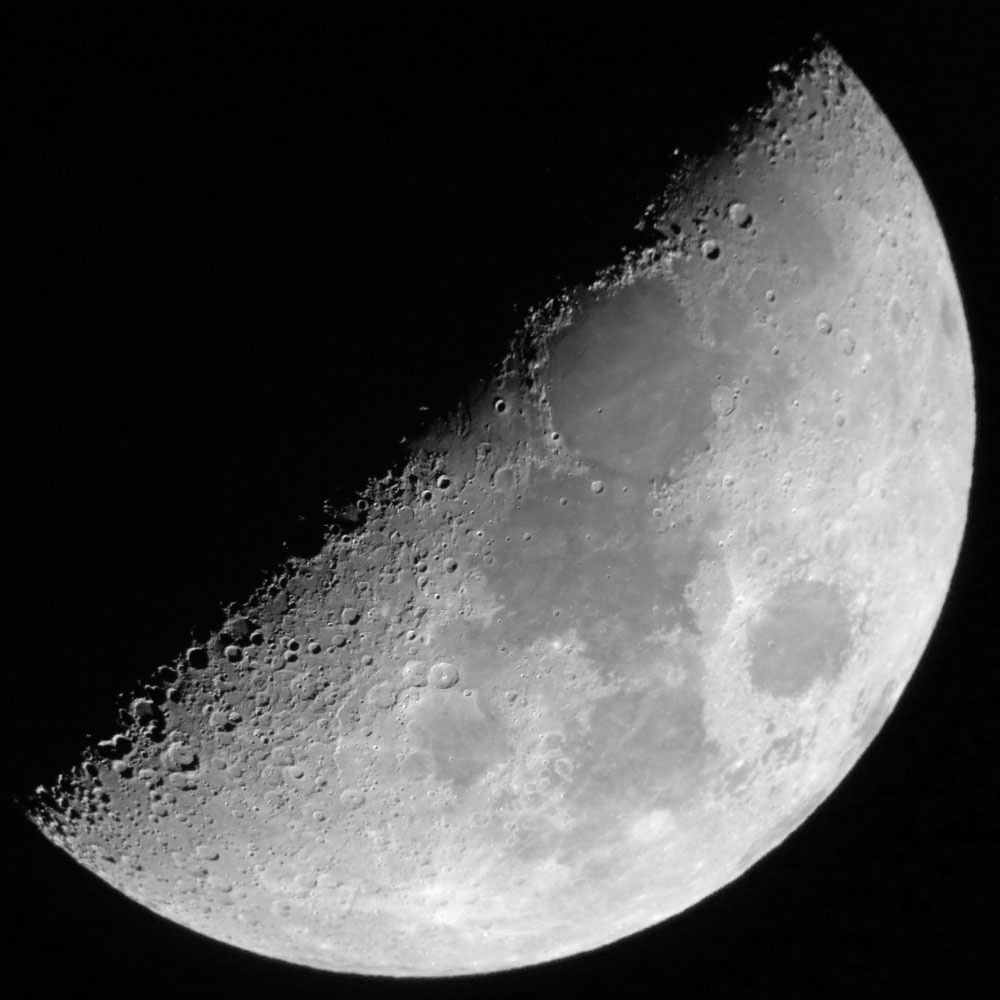 |
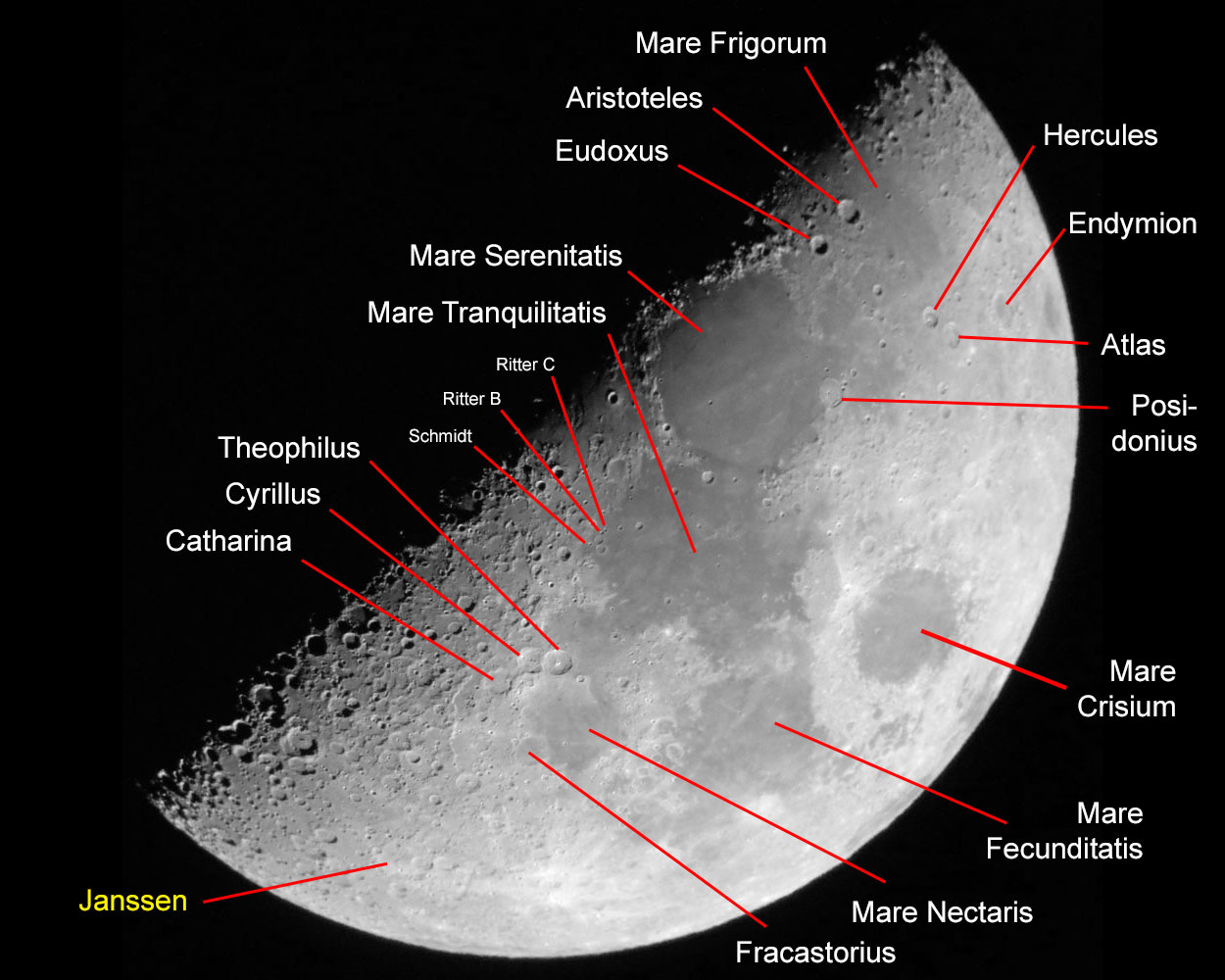 |
Photo data: April 3, 2017, Sky-Watcher Explorer 150PDS telescope, Ricoh GR held to the 7 mm UWA eyepiece
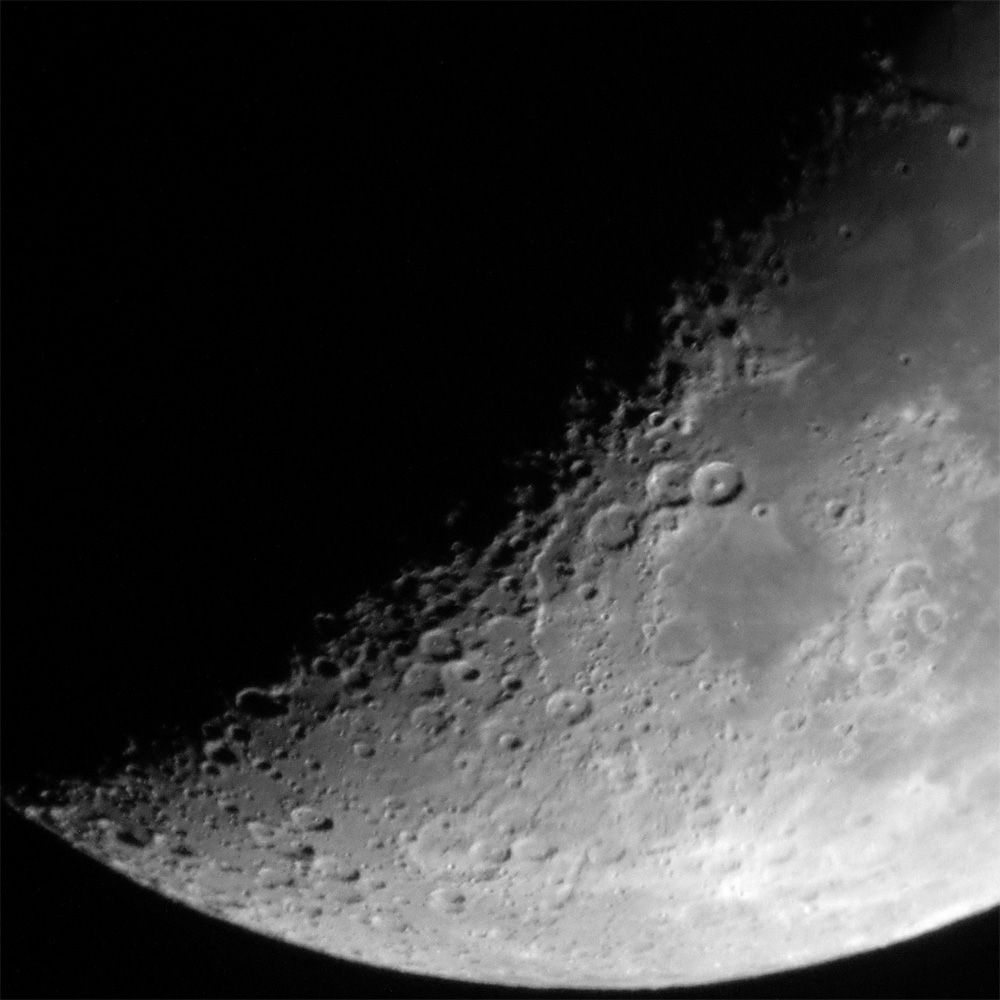 |
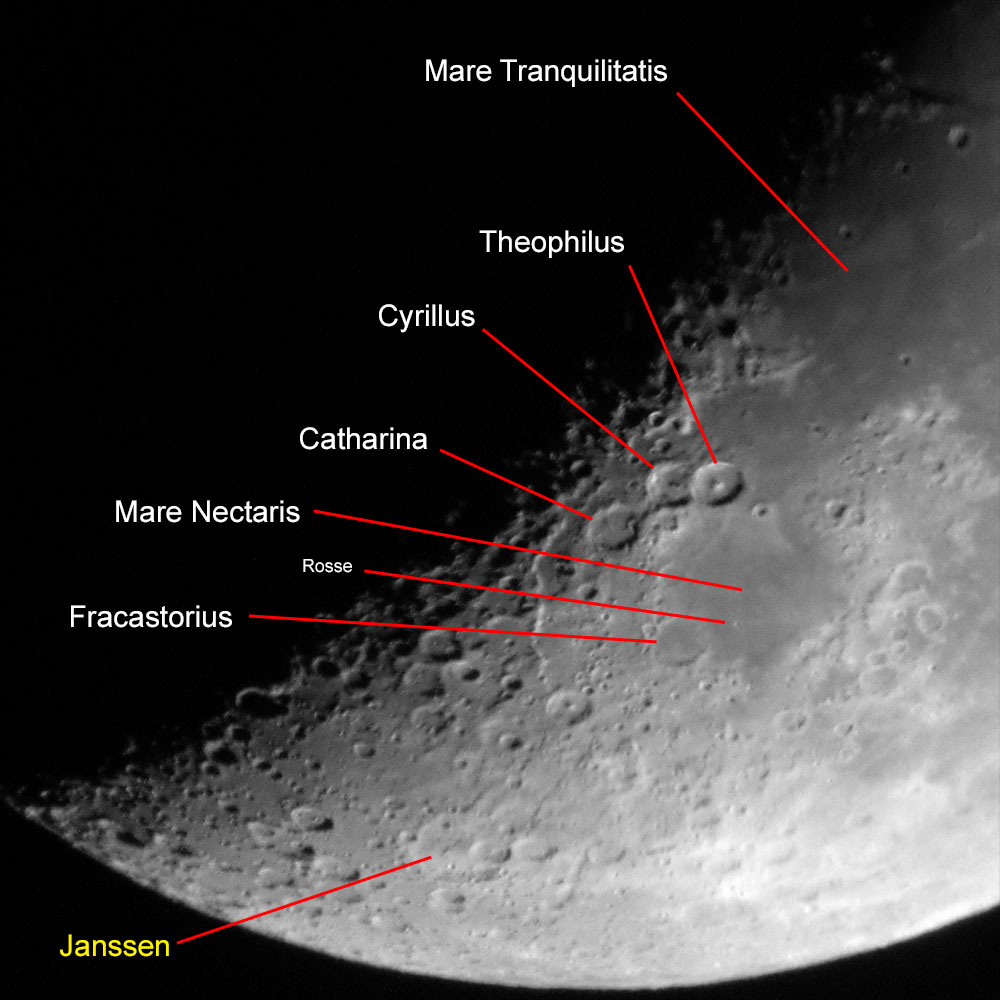 |
Photo data: April 2, 2017, Sky-Watcher Skymax-102 telescope, Ricoh GR held to the 16 mm UWA eyepiece
According to Spix, the Montes Jura (Jura mountains) are the remains of a crater wall. When the Jura mountains appear at the terminator and are lighted by the sun while still extending "into the darkness", this phenomenon is called the "golden handle." The photo section below shows the Jura mountains (top left) and the craters Plato (top) and Copernicus (bottom). Above and to the left of Copernicus you will find the Montes Carpatus. Note the "golden handle!"
 |
 |
Photo data: February 25, 2018, Sky-Watcher Skymax-102 telescope, Ricoh GR held to the eyepiece
One day later, the terminator has left the Jura mountains. The following section from February 26, 2018 (three days after half moon) has been made lighter and shows again the Jura mountains (top left) and the craters Plato (top) and Copernicus (bottom). Above and to the left of Copernicus you will once again find the Montes Carpatus.
 |
 |
Photo data: February 26, 2018, Sky-Watcher Skymax-102 telescope, Ricoh GR held to the eyepiece